#there are so many other pieces of media that use that trope
Explore tagged Tumblr posts
Text
@celluloiddream666
Like yes, and no. I think there’s a distinction to be made here. Most superhero films (particularly the early ones) have historically centred men as the superheroes. Crucially, Buffy is a woman.
The stereotypical superhero is a man who is given superpowers which he goes on to use to protect mankind. So far so similar. He may also be a physically weak person who then becomes strong, but there’s still a difference here in the intentions behind the character’s empowerment.
Because Buffy’s superhero arc comes from a slightly different place, It’s not just about a physically weak person becoming supernaturally strong, it’s crucially about a woman gaining the ability to overcome her oppressor, and to save her own life.
Whedon envisioned Buffy particularly as a subversion of the typical horror movie scene, in which a woman is attacked in an alley (often by a man) and dies as a result. For all his flaws in writing the series, his intention was for the premise to be a feminist reversal of that trope. The empowerment of an otherwise vulnerable woman to protect herself from violence and misogyny.
A quote from the article where I read this:
“Whedon created the character of Buffy as a reaction to the trope of the blonde girl who tends to die first in horror films.”
It was particularly the idea of the female victim’s early death that I felt I wanted to address. Because if subverting that was Whedon’s aim, in a roundabout way he failed to do so.
Visually, yes, that trope is subverted in the scene where Angel meets Buffy for the first time:
youtube
But in the longer term? Buffy’s superpowers didn’t save her from dying. In fact, she dies three times throughout the series. Directly as a result of being the slayer. It was this particular irony that I was trying to bring out.
And although historically male superheroes might have experienced bullying or been physically weak before receiving their powers, I don’t think many of them were so vulnerable as to be at risk of death before their transformation. I think that’s the difference.
It’s also ironic to me that in this very specific case, Whedon intended Buffy’s powers to be of particular use for her to defend herself from danger. Not everyone else. And that’s not an intention you can accredit to all other media in this genre.
So when I say it’s ironic that she has to sacrifice herself to save everyone else, I’m not talking about her being a superhero in general, I’m talking about Whedon’s failures to adhere to the intentions he had for Buffy when creating this specific piece of media.
I understand if my point was lost on you, since I added crucial parts of that analysis in my tags originally, so I’ll reupload them below for you.

I hope that helps get my point across a little better :)
I once saw a quote that said the idea for Buffy came from subverting the horror movie trope of ‘woman is attacked in dark alley’, by making the female protagonist stronger than her attacker.
But I do find it interesting that when the female MC is given the power to fight back, she’s not just expected to protect herself, but to save everyone else as well.
And I think that’s such a tragic side to Buffy’s character, that it’s never enough for her just to protect herself, she has to save the world too, even at the expense of her own life and happiness.
#also#I don’t think it arguably being a part of the superhero genre should diminish my point?#we should still be able to talk about the ways female ‘superheroes’ are written#and the specific pitfalls of their particular representation#plus I know there’s something to be said about Buffy’s purpose as the chosen one/slayer being to save others#but I’m more interested here in Whedon’s behind-the-scenes development of the show…#e.g#where the idea came from in the first place#and how well he achieved that particular vision#p.s#I really need to stop adding crucial parts of my analysis in the tags 🤦♀️😭#buffy summers#btvs#buffy the vampire slayer#Youtube
255 notes
·
View notes
Text
So I accidentally almost got into an argument on Twitter, and now I'm thinking about bad historical costuming tropes. Specifically, Action Hero Leather Pants.
See, I was light-heartedly pointing out the inaccuracies of the costumes in Black Sails, and someone came out of the woodwork to defend the show. The misunderstanding was that they thought I was dismissing the show just for its costumes, which I wasn't - I was simply pointing out that it can't entirely care about material history (meaning specifically physical objects/culture) if it treats its clothes like that.
But this person was slightly offended on behalf of their show - especially, quote, "And from a fan of OFMD, no less!" Which got me thinking - it's true! I can abide a lot more historical costuming inaccuracy from Our Flag than I can Black Sails or Vikings. And I don't think it's just because one has my blorbos in it. But really, when it comes down to it...
What is the difference between this and this?
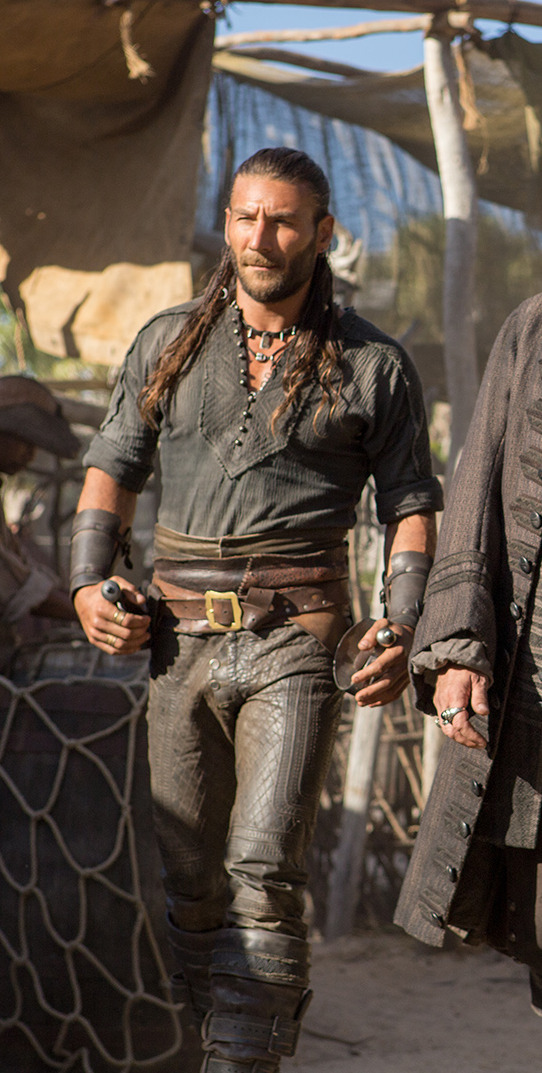
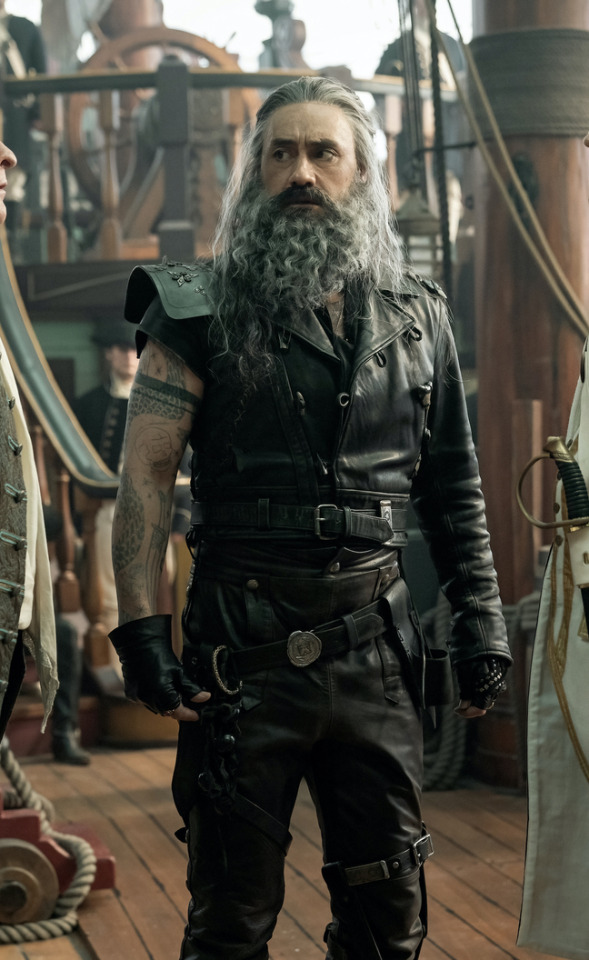
Here's the thing. Leather pants in period dramas isn't new. You've got your Vikings, Tudors, Outlander, Pirates of the Caribbean, Once Upon a Time, Will, The Musketeers, even Shakespeare in Love - they love to shove people in leather and call it a day. But where does this come from?

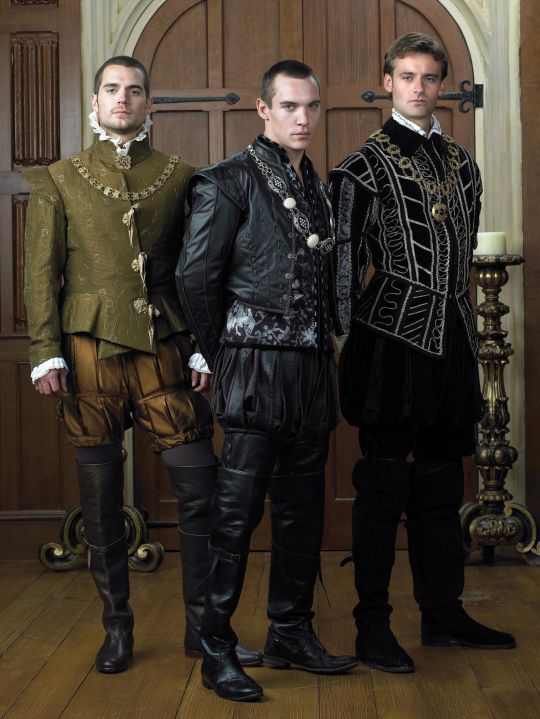
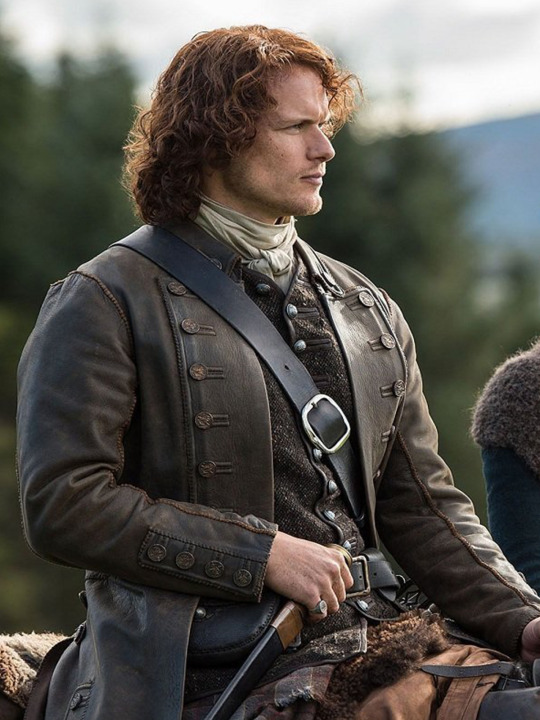

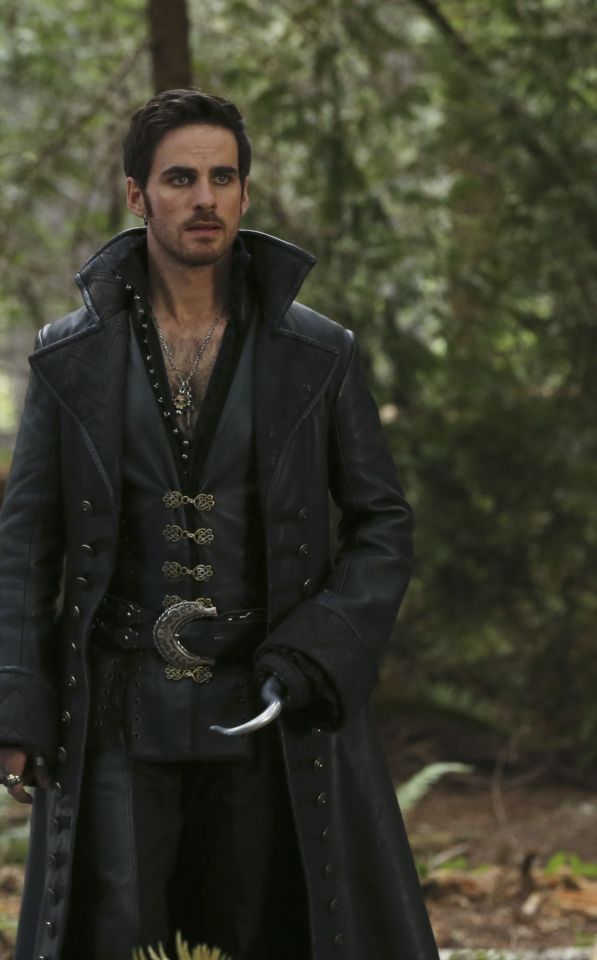
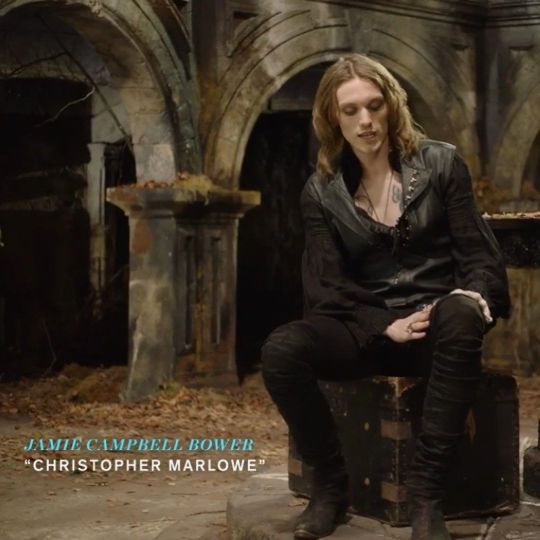
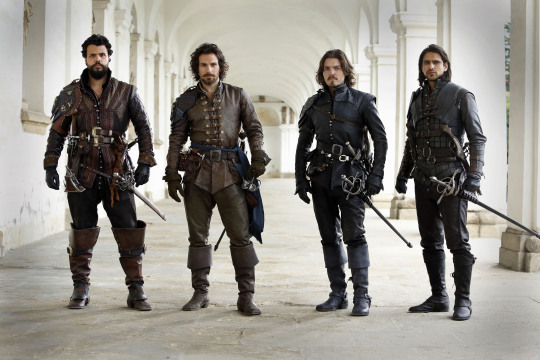
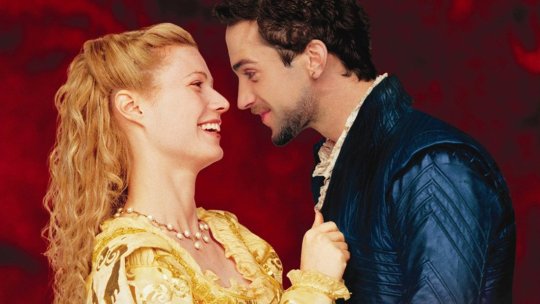
Obviously we have the modern connotations. Modern leather clothes developed in a few subcultures: cowboys drew on Native American clothing. (Allegedly. This is a little beyond my purview, I haven't seen any solid evidence, and it sounds like the kind of fact that people repeat a lot but is based on an assumption. I wouldn't know, though.) Leather was used in some WWI and II uniforms.
But the big boom came in the mid-C20th in motorcycle, punk/goth, and gay subcultures, all intertwined with each other and the above. Motorcyclists wear leather as practical protective gear, and it gets picked up by rock and punk artists as a symbol of counterculture, and transferred to movie designs. It gets wrapped up in gay and kink communities, with even more countercultural and taboo meanings. By the late C20th, leather has entered mainstream fashion, but it still carries those references to goths, punks, BDSM, and motorbike gangs, to James Dean, Marlon Brando, and Mick Jagger. This is whence we get our Spikes and Dave Listers in 1980s/90s media, bad boys and working-class punks.

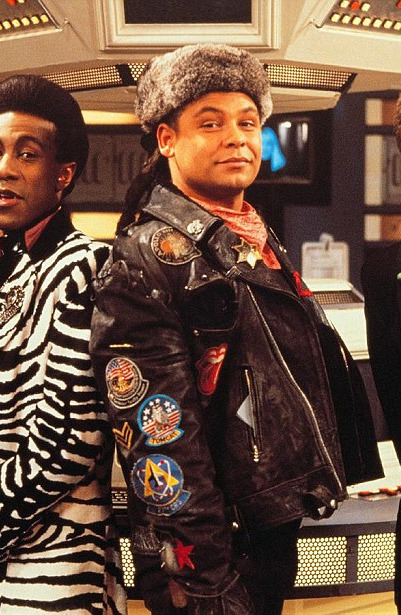
And some of the above "historical" design choices clearly build on these meanings. William Shakespeare is dressed in a black leather doublet to evoke the swaggering bad boy artist heartthrob, probably down on his luck. So is Kit Marlowe.
But the associations get a little fuzzier after that. Hook, with his eyeliner and jewellery, sure. King Henry, yeah, I see it. It's hideously ahistorical, but sure. But what about Jamie and Will and Ragnar, in their browns and shabby, battle-ready chic? Well, here we get the other strain of Bad Period Drama Leather.
See, designers like to point to history, but it's just not true. Leather armour, especially in the western/European world, is very, very rare, and not just because it decays faster than metal. (Yes, even in ancient Greece/Rome, despite many articles claiming that as the start of the leather armour trend!) It simply wasn't used a lot, because it's frankly useless at defending the body compared to metal. Leather was used as a backing for some splint armour pieces, and for belts, sheathes, and buckles, but it simply wasn't worn like the costumes above. It's heavy, uncomfortable, and hard to repair - it's simply not practical for a garment when you have perfectly comfortable, insulating, and widely available linen, wool, and cotton!
As far as I can see, the real influence on leather in period dramas is fantasy. Fantasy media has proliferated the idea of leather armour as the lightweight choice for rangers, elves, and rogues, a natural, quiet, flexible material, less flashy or restrictive than metal. And it is cheaper for a costume department to make, and easier for an actor to wear on set. It's in Dungeons and Dragons and Lord of the Rings, King Arthur, Runescape, and World of Warcraft.
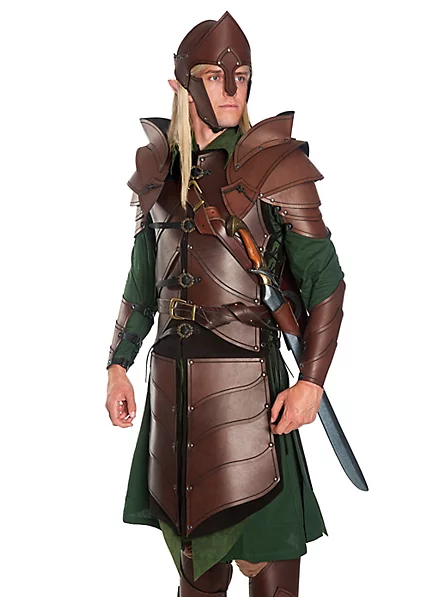
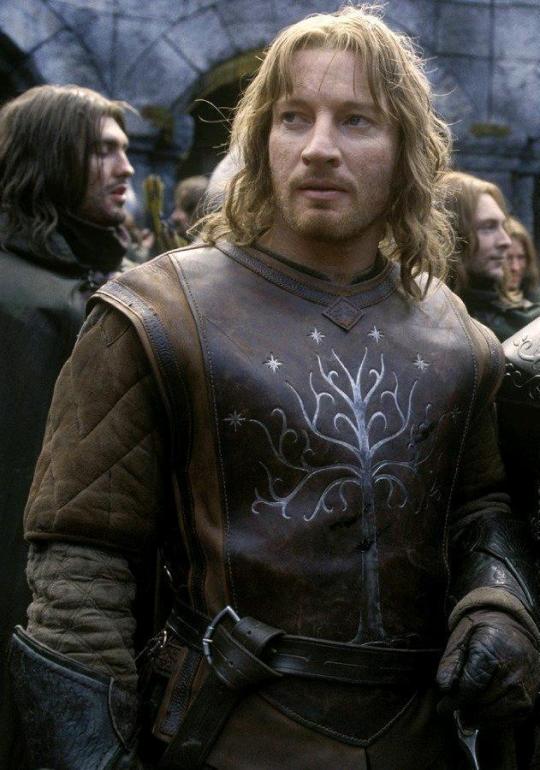
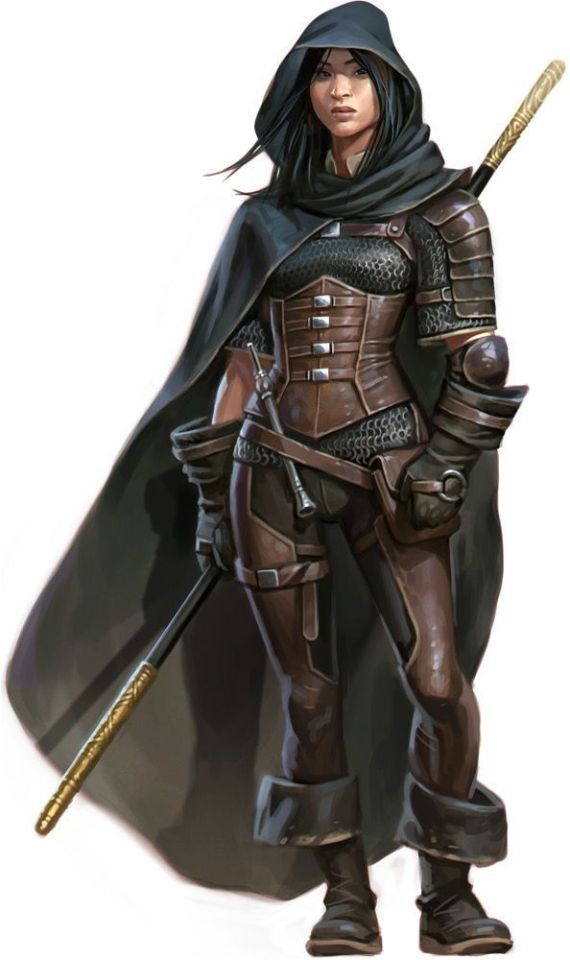
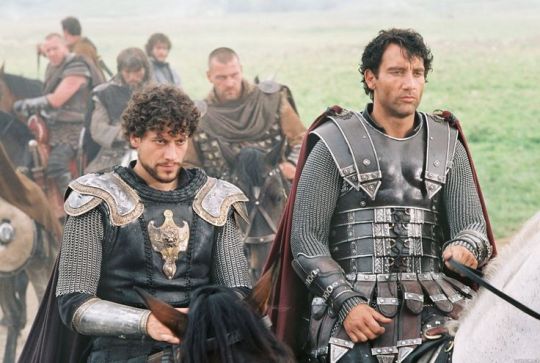

And I think this is how we get to characters like Ragnar and Vane. This idea of leather as practical gear and light armour, it's fantasy, but it has this lineage, behind which sits cowboy chaps and bomber/flight jackets. It's usually brown compared to the punk bad boy's black, less shiny, and more often piecemeal or decorated. In fact, there's a great distinction between the two Period Leather Modes within the same piece of media: Robin Hood (2006)! Compare the brooding, fascist-coded villain Guy of Gisborne with the shabby, bow-wielding, forest-dwelling Robin:
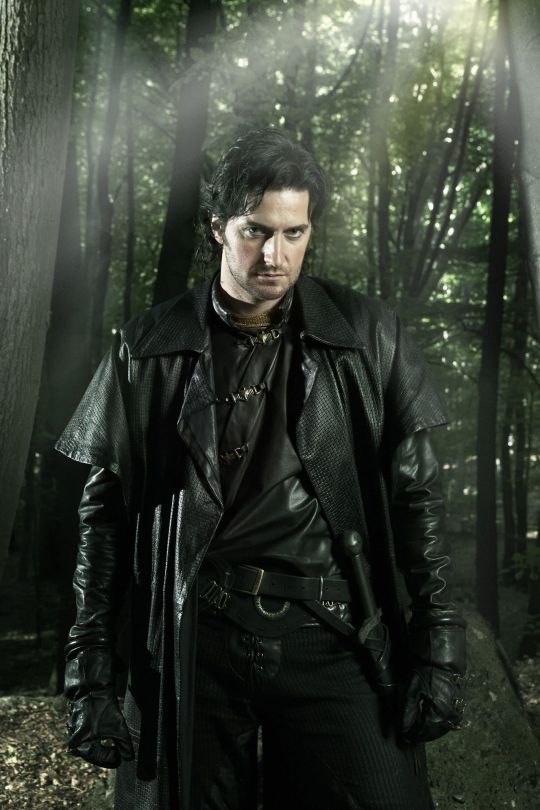

So, back to the original question: What's the difference between Charles Vane in Black Sails, and Edward Teach in Our Flag Means Death?
Simply put, it's intention. There is nothing intentional about Vane's leather in Black Sails. It's not the only leather in the show, and it only says what all shabby period leather says, relying on the same tropes as fantasy armour: he's a bad boy and a fighter in workaday leather, poor, flexible, and practical. None of these connotations are based in reality or history, and they've been done countless times before. It's boring design, neither historically accurate nor particularly creative, but much the same as all the other shabby chic fighters on our screens. He has a broad lineage in Lord of the Rings and Pirates of the Caribbean and such, but that's it.
In Our Flag, however, the lineage is much, much more intentional. Ed is a direct homage to Mad Max, the costuming in which is both practical (Max is an ex-cop and road warrior), and draws on punk and kink designs to evoke a counterculture gone mad to the point of social breakdown, exploiting the thrill of the taboo to frighten and titillate the audience.
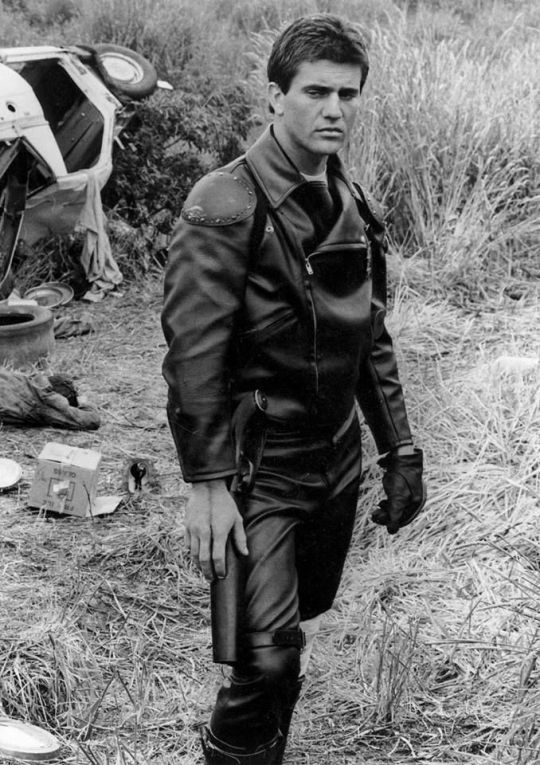
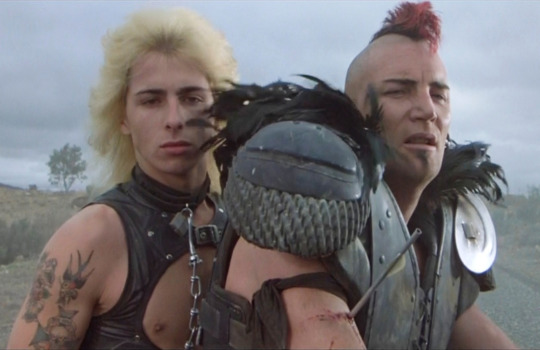
In particular, Ed is styled after Max in the second movie, having lost his family, been badly injured, and watched the world turn into an apocalypse. He's a broken man, withdrawn, violent, and deliberately cutting himself off from others to avoid getting hurt again. The plot of Mad Max 2 is him learning to open up and help others, making himself vulnerable to more loss, but more human in the process.

This ties directly into the themes of Our Flag - it's a deliberate intertext. Ed's emotional journey is also one from isolation and pain to vulnerability, community, and love. Mad Max (intentionally and unintentionally) explores themes of masculinity, violence, and power, while Max has become simplified in the popular imagination as a stoic, badass action hero rather than the more complex character he is, struggling with loss and humanity. Similarly, Our Flag explores masculinity, both textually (Stede is trying to build a less abusive pirate culture) and metatextually (the show champions complex, banal, and tender masculinities, especially when we're used to only seeing pirates in either gritty action movies or childish comedies).
Our Flag also draws on the specific countercultures of motorcycles, rockers, and gay/BDSM culture in its design and themes. Naturally, in such a queer show, one can't help but make the connection between leather pirates and leather daddies, and the design certainly nods at this, with its vests and studs. I always think about this guy, with his flat cap so reminiscient of gay leather fashions.
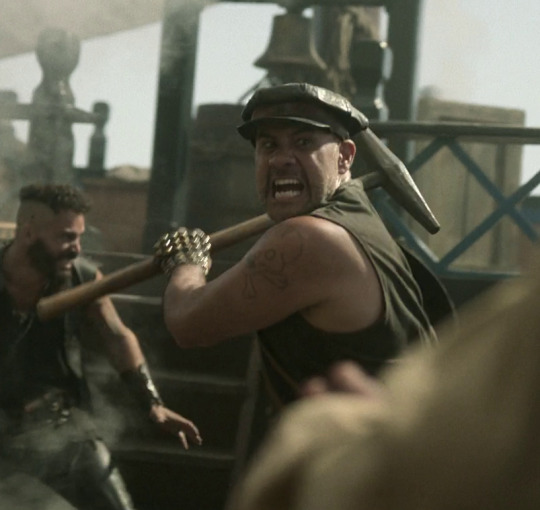
More overtly, though, Blackbeard and his crew are styled as both violent gangsters and countercultural rockstars. They rove the seas like a bikie gang, free and violent, and are seen as icons, bad boys and celebrities. Other pirates revere Blackbeard and wish they could be on his crew, while civilians are awed by his reputation, desperate for juicy, gory details.
This isn't all of why I like the costuming in Our Flag Means Death (especially season 1). Stede's outfits are by no means accurate, but they're a lot more accurate than most pirate media, and they're bright and colourful, with accurate and delightful silks, lace, velvets, and brocades, and lovely, puffy skirts on his jackets. Many of the Revenge crew wear recognisable sailor's trousers, and practical but bright, varied gear that easily conveys personality and flair. There is a surprising dedication to little details, like changing Ed's trousers to fall-fronts for a historical feel, Izzy's puffy sleeves, the handmade fringe on Lucius's red jacket, or the increasing absurdity of navy uniform cuffs between Nigel and Chauncey.
A really big one is the fact that they don't shy away from historical footwear! In almost every example above, we see the period drama's obsession with putting men in skinny jeans and bucket-top boots, but not only does Stede wear his little red-heeled shoes with stockings, but most of his crew, and the ordinary people of Barbados, wear low boots or pumps, and even rough, masculine characters like Pete wear knee breeches and bright colours. It's inaccurate, but at least it's a new kind of inaccuracy, that builds much more on actual historical fashions, and eschews the shortcuts of other, grittier period dramas in favour of colour and personality.
But also. At least it fucking says something with its leather.
#everyone say 'thank you togas' for not including a long tangent about evil rimmer in red dwarf 5x05#Our Flag Means Death#Togas does meta#and yes these principles DO fall apart slightly in s2 and i DON'T like those costumes as much#don't get me wrong they're fun and gorgeous - but generally a bit less deep and more inaccurate. so. :(#I'm not sure this really says anything new about Our Flag but I just needed to get my thoughts out#i hate hate hate Gritty Period Drama costumes they're so boring and so ugly and so wrong#god bless OFMD for using more than 3 muted colours and actually putting men in heels (and not as a shorthand for rich/foppish villainy) <3#looking at that Tudors still is insane like they really will go to any lengths to not make men feel like they've got bare legs XD#image descriptions in alt text#and yes i DID just sink about two hours into those so you'd better appreciate them
1K notes
·
View notes
Text
Smut Writing Tips
I could go on for 600 years on this so I cut myself off at seven basic tips for improving your smut writing. I don't know how to name this something that isn't suggestive so fuck it we ride at dawn etc. If you're having trouble writing smut/improving your smut writing, here are a few things that might help? I'm not the ultimate authority, do whatever you want, take what serves you and leave the rest, etc.
1) Get in touch with what turns you on. You can take this literally or figuratively. You don't have to be sexually active or even sexually aroused to write smut! It's not required. But you should know what gets you going, you know? Because whatever you're into, there are other people out there who are into it, too. Writing the things you're passionate about translates to the page. If you're disconnected from what you're writing, it's going to read that way.
2) Practice by translating a personal fantasy to text. THIS IS FOR YOU ONLY. Unless you like it enough to share? But this is an exercise to get you past the initial discomfort and embarrassment of writing sexy scenes. Many of us have romantic or sexual fantasies, even those on the ace/aro spectrum. When they live in our head, they feel safe. When we put them to the page, they suddenly EXIST in a space where someone else can theoretically perceive them. Getting comfortable with that takes a little bit of work/practice.
3) Try writing from the POV of the subject of the reader's desire. When I smut, I write from my OC's POV sometimes, but more often... I write from Astarion's. That's intentional. It's hot to feel DESIRED, to feel WANTED. Being in the subject's head means that the reader is experiencing that desire for themselves. There's power and sexiness in knowing you're making someone feel that way.
4) Physical description and positioning is great, but how do they FEEL? If you've ever heard the term "male gaze," you know it's frequently applied to visual media, especially where the subjects are treated as objects to be observed rather than people with interior thought and feeling. Smut WRITING gives us the opportunity to both describe the actions taking place and also the internal responses of the characters. It's not just what goes where, it's how that makes the body feel, the mind, the heart. It deepens the scene. Not everything needs to be "making love," but the tension and character interaction are still vital.
5) Realism is a fine base but it's not required. Look, there are a lot of smut tropes out there that are not REMOTELY based on reality and we love them anyway because a big part of this style of writing is the FANTASY of the thing. Like, yes, it's going to take some readers out if you're describing a position that's not physically possible. That's something that should be workshopped. But like. People come here for sex pollen and knotting. It's okay to be a little weird. Just consider the fantasy logistics.
6) Sometimes a little humor or awkwardness adds to the experience. Not everything has to be peak romance of the highest order, you know? Sex is messy and weird. If the participants can be a bit messy and weird together, it's both character-building and endearing. Don't be afraid to be like, oh this resulted in fluids and now we have to take care of that.
7) The tension is as important as the cumshot. Yeah I said that. An important piece of writing burning-hot smut is properly building tension. You can do that in a few words or many words. The ANTICIPATION, the WANTING, the not-quite-there-but-god-I-wanna-be of it all. It makes the release that much sweeter.
200 notes
·
View notes
Text
love in the spotlight | kylian mbappe x model!reader
summary; you and kylian have been dating for a while and everything is going well until he signs for real madrid and everyone thinks you broke up
genre; fluff, smau
face claim; elisa maino
note; English is not my first language
masterlist!

˚ ༘♡ ⋆。˚ ❀˚ ༘♡ ⋆。˚ ❀˚ ༘♡ ⋆。˚ ❀˚ ༘♡ ⋆。˚
over a year of dating kylian mbappé feels surreal. it all started at a gala – a world you stepped into with your blossoming modeling career. a chance encounter, a meeting of eyes across the room, and suddenly, the world-famous footballer seemed like just another guy, shyly hoping to impress. he knew you were the one that night, and by the end of it, you were on a date with kylian mbappé.
the rollercoaster began. the highs were exhilarating – stolen kisses under the eiffel tower, surprise visits during fashion weeks, the thrill of cheering him on from the vip box at the parc des princes. the lows were like navigating a minefield – prying paparazzi, jealous whispers, fans who seemed to think they owned a piece of his heart. but through it all, you were a team. six months in, you took the plunge, moving to paris to be with him.
keeping your relationship a secret felt strange. but kylian, ever the strategist, knew the media frenzy that would erupt. so, you flew under the radar, your love a secret whispered between stolen moments. until, of course, the bombshell signing with real madrid. the world learned about kylian's move, and then, they learned about you. the spotlight found you, but you weren't afraid. you had him by your side, and together, you were ready to face anything.
everything was out in the open with kylian. from the start, fans adored their union. they were a social media darling couple, constantly cheering each other on and attending events together. kylian's move to real madrid, however, cast an unexpected shadow. public appearances dwindled, and whispers of a breakup swirled through the tabloids.
y/nl/nuser

liked by kendalljenner, wolfiecindy, charles_leclerc and others
y/nl/nuser ✨🌼
username you're the prettiest!!!
username is she in madrid with kylian?
username i don't think so. she was attending an event in milan
username it's been a while since we last saw them together 😢
username where is kylian and why not in the likes?? 😭
username don't overreact. obviously he is busy with his move to madrid
username even so he always has been so supportive with her
username they don't owe us nothing girl. let them be private if they want
charles_leclerc beauty
❤️ liked by the author
username i'm getting crazy rn
you were scrolling through your instagram when a post popped up. it was a hilarious play on the whole "celebrity couple break up" trope, and you found yourself letting out a genuine laugh. a moment later, kylian's face filled your screen on a video call. his brow furrowed in concern.
"there you are," he said, relief washing over his features. "why did you like that post, y/n?"
"oh, kylian" you sighed, a playful smile tugging at your lips. "it was just... funny. sorry, mon amour, i just needed a laugh."
kylian's expression softened. he knew the pressure you were both under. "maybe we should do something to address the rumors," he suggested.
you nodded, a mischievous glint in your eyes. "let's give them something truly unexpected."
footballwags
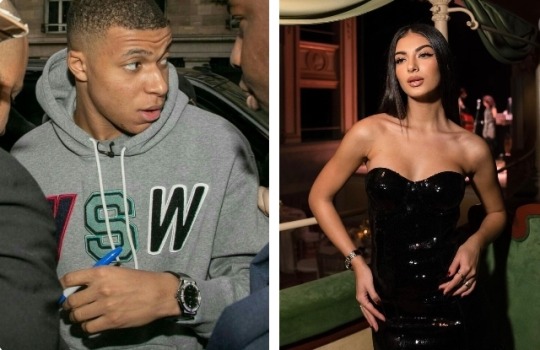
liked by y/nl/nuser, username, kmbappefans
footballwags possible breakup between the model y/n l/n and the soccer player kylian mbappé? it's been a while since they were last seen together publicly and they currently no longer react to his posts and there doesn't seem to be any contact between them. we assume that y/n is in milan at an event to which she was invited while kylian is in madrid. what do you think about this? we are sad to see one of our favorite couples distance themselves, in any case we wish them both many good things
kmbappefans as any other couple they deserve respect. please give them privacy and don't spread unfunded rumours
username 💀💀💀
username she is in the likes...
username i think that's enough confirmation
username @k.mbappe @y/nl/nuser please tell us something 😭😭
k.mbappe

liked by vinijr, judebellingham, endrick and others
k.mbappe mi nueva casa 🏟️😍 #halamadrid
elisahums hala madrid baby
username and?
username who are you?????
kmbappefans 🤍🤍🤍
username she's not even here 💔
username i'm starting to believe the rumours...
realmadrid 🤍🤍🤍
judebellingham welcome mate 😆🤝
y/nl/nuser uploaded to their story;

k.mbappe mine ❤️
y/nl/nuser


liked by k.mbappe, wolfiecindy, kmbappefans, footballwags and others
y/nl/nuser from paris to madrid and to the end of the world, i love you my big boy ❤️
k.mbappe je t'aime mon amour, thank you for all your support ❤️
❤️ liked by the author
username I LOVE THEM SO MUCH THAT I'M CRYING
username i'm literally crying too 😭
username don't scare me like that again 😡
username you are my favourites
footballwags thanks god our favourite couple is still together and happy ❤️
k.mbappe uploaded to their story;
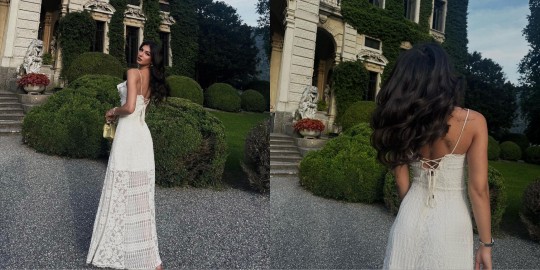
[caption: my pretty girl]
#football smau#football social media au#footballer x reader#footballer x y/n#kylian imagines#kylian mbappe#kylian mbappe fluff#kylian mbappe imagine#kylian mbappe one shot#kylian x reader#kylian x you#football x reader#football#football one shot#smau#real madrid x reader#real madrid
274 notes
·
View notes
Text
Stripping away Supports
In classic outlining structure, the midpoint is where your MC loses all the advantages they’d relied on up until that point—allies, resources, powers, etc. In fact, this structure is used in so many films that the ‘characters fight at the midpoint’ is an easily found cliché throughout media.
However, there are other ways of stripping away your MC’s supports to achieve the same effect.
They fight
Okay I know I just implied we might want to avoid this, but why fix what’s not broke? The important part about following the ‘characters fight at the midpoint’ trope is to ensure the fight doesn’t start at the midpoint, but rather starts from the very moment the characters are seen with each other/meet. The fight should be about something that’s been brewing underneath all of their interactions from the beginning—the one thing they should’ve talked about but didn’t. The ‘elephant in the room’.
This fight is less of a fight but an unearthing of feelings, thoughts, and problems that have always been there, but have been ignored or avoided up until then. What’s the event that unearths these truths? Typically, something threatening or scary causes people to speak ‘out of turn’…
2. The protagonist chooses to go on alone
Something big happened, something so dangerous and scary that the protagonist intentionally pushes away their allies in order to protect them… Of course, later they might realize that they are stronger together anyway. This is also a bit of a cliché, but done thoughtfully can be very impactful.
3. The allies are in over their head
The reversal of the last trope, instead of the protagonist pushing their allies away, the allies decide this quest is far too dangerous and risky for them… The protagonist is abandoned by their allies. Later, these supports may return, their love for the protagonist stronger than their fear of the situation, but whatever happened must have spooked them bad enough to lead them to betrayal.
4. An integral piece they’ve been relying on has been destroyed
The hideout was found and torched, the old man’s journal was tossed into the sea, the leader/mentor/keeper of information has been kidnapped or killed. Maybe the allies and the protagonist are still together, but one important thing that’s been keeping them together or leading them has been lost, now they have to adapt and improvise on the fly if they wish to continue their quest.
5. An integral piece they’ve been relying on turned out to not be true or important
Similar to the last but with a bit of a twist. They’ve been following the wrong lead all along—where to go next now that the very foundation of their quest is crumbling beneath them?
What are some other ways of fulfilling the midpoint reversal?
#writing#writers#writing tips#writing advice#writing inspiration#creative writing#writing community#books#film#filmmaking#screenwriting#novel writing#fanfiction#writeblr#midpoint#midpoint reversal#stripping away supports#outlining#planning
593 notes
·
View notes
Text
It’s A Ship - Literally Revisited
As many of my long-time followers and friends know…
THIS BLOG supports the POTENTIAL FUTURE of Beetlejuice and Lydia.
In the past, I have written posts about WHY we ship Beej and Lyds, specifically here on this blog, when there are so many controversies. It needed to be cleared up many times because, with every new piece of media, there comes opposition, which is totally understandable if you are not used to supernatural or horror-themed romance tropes.
I am here to help break it down for all the new fans sitting back and trying to figure out the ship's where, what, why and whens.
Here we go!
Movie verse:
Many of us were young when we met Beetlejuice and Lydia for the first time. Some latched on to and related to a young Winona Ryder. It was a vibe, and while we are well aware that in real-life terms, a teen is not ready to be involved with a 600+ ghost (cuz that’s an option 🤣), we couldn't help but find the allure in the Living Meets Death dichotomy. As you will undoubtedly see, this is a running theme in the fandom.
We had countless reunion fics featuring an older Lydia (sometimes by years, sometimes by months) reconnecting with her villain/antagonist. Many were dark fic, some light and fluffy and some off the wall chaotic, while some crossed over into the MoToon verse (yes that is a thing)
So here we are, more than 30 years later, and our pair reunited legitimately on the big screen. It was beautiful and, without giving away any spoilers since this new piece of media is still fresh, it gives us more to play with because, let’s face it, he is not done haunting her.
With this movie universe, there is still potential for this ship to thrive. (And that’s not just because Winona and Michael are down. I still am in shock over their revelations)
Toon Verse:
Yet another oldie that many grew up on. This one is a hotbed for both friend-shipping and Relation-shipping.
Here, we have a long-term bond that can be wholesome, platonic, romantic, complicated, or, on occasion, dark and twisted.
Stories have ranged from childhood crushes to outright possessiveness. The fanart from cute fluff to… well… rule 34.
Lydia is young in this cartoon. We are aware of that and in any cartoon fandom, aging up is par for the course. It is expected (and preferred by many) that any stories of romance happen in circumstances outside of the toon cannon.
Age issues aside, we cannot deny that BJ adores her. The man has an entire shrine in his head, idolizing this twisted, weird girl that, once again, many older fans related to. He would do anything for her and has proved it many times. The chaotic dead man with no shits to give will give up freedom and wealth and go against his nature to make her happy.
How can we not find the potential for a future of these two goofballs?
Musical Verse:
This universe combined the goofiness of Toon with the antagonism of the movie—a nice combo that I and those we call MusicalBabes enjoy.
Regardless of what the cast believes or feels about the shipping subject, they are working with a pair of unseen, attention-starved, chaotic nut jobs—a compliment, not disparagement.
Beetlejuice and Lydia need each other. They were miserable before they met and would have continued to be so had they not entangled themselves in the other’s existence.
Living and the dead, once again, need each other to balance their lonliness.
Does musical verse have ship potential? Hell, yes, it does. (Also, this is the only piece of media where the wedding actually went through)
Just a few Common Tropes In This Ship: (there are so many more than this)
Mayfly/December Romance (also see: May/December and Age Gap)
Reincarnation Romance
Death and the Maiden (also see: Monster and the Maiden)
Beast and Beauty
Ugly Guy, Hot Wife
Boy meets Ghoul
Why the name Beetlebabes?
Read: Beetlebabes: A History
To find more ship related content use: Beetlejuice x Lydia, Betelyds (alt. Beetlyds), Beej and Lyds, Beetle and Babes, Beetz and Deetz (or more simply Beetz) are the original ship names. BeetleBabes, MovieBabes, ToonBabes and MusicalBabes are all relatively new.
This blog often uses Beetlebabes but it’s not a hard fast rule that it will be on every post.
The goal of Its A Ship - Literally...
I created this blog many years ago (around 2016) to collect all the goodness in the fandom. Memes, art, fics, fan theories. I picked up the ship names and used them as tags. Gathered as much as I could from Tumblr posts, in all universes, and tried so hard to stay neutral amidst the internal fandom drama. (give or take a few misteps, iykyk)
The only goal I have here is to collect and share and boost all universes. Movie, Toon and Musical, including the mini verses of MoToon and Graveyard Revue if I can find it.
I do this for fun, to destress and play internet magpie with shiny beetle stuff while I stuff everything into the queue.
Lots of love to you guys. And as always, please show love to your fan creators. Credit them and boost the signals. These creators do so much hard work.
- 🪲 - 🪲 - 🪲 - 🪲 - 🪲 -
Previous Posts Like This: Because It Needs to Be Said Yet Again (2017) | One More Time (2019)
#beetlejuice#beetlebabes#lydia deetz#betelgeuse#beetlelyds#beej and lyds#about the ship#beetlejuice x lydia#beetz#beetz and deetz#betelyds#lydia and beetlejuice
95 notes
·
View notes
Text
Understanding the Romantic Narrative Arcs in Final Fantasy VII

There has been no shortage of discourse surrounding the “Love Triangle Debate”, (a fan-constructed term, I must inform you) of FFVII for a very long time. Most recently, with the release of FFVII Rebirth, this discourse has intensified and led to a wide spectrum of fan conclusions that range from grounded in narrative sense to completely baseless or delusional. Some takes are attached to contemporary relationship issues, personal experience, comparisons to other media or works of fiction, social constructs or societal issues, personal preference, or a lack of full context.
While any piece of media or fiction is subject to some level of interpretation (this is the very nature of humans consuming works of art), most works are created with intentional narrative direction. In fact, many works are formulaic, especially in genres such as fantasy, romance, mystery, etc. While of course there are always exceptions and deviations, as a writer and former English literature teacher I can say that most stories follow a general narrative structure or arc that makes them digestible and satisfying to readers/audiences. Such arcs impact the main, external, internal, and subplots of a story, as well as individual character arcs and character relationship arcs.
Final Fantasy is no different. While there are other cultural influences as FFs are Japanese stories, my experience with the series is the writing generally follows most storytelling conventions that can be found in all forms of archetypal writing, cross-culturally and generationally. FFVII is often accused of being ambiguous or open-ended in many aspects of its story. I tend to disagree with this idea and think that its storytelling is subversive rather than ambiguous, meaning that it requires players to work harder and use more critical thinking in order to reach the author’s intended conclusions. It also relies on false or misleading narratives for a good part of the story (such as red herrings, illusions, or unreliable narrators) as storytelling devices that help the truth in the story unfold in later parts of the narrative arc(s). Like any piece of media using these storytelling methods, this means that there will be controversy or debate as audiences contend with the author’s messages or intentions. However, that does not mean that the intentions are not there and that there is not an intentional outcome on the part of the writers.
Personally, I believe that FFVII has a very clear narrative structure for all of its main plot, sub plots, and character arcs, but that its approach is challenging to many players who have to wrestle with the story as it unfolds to understand it. It is not spoon-fed, and some revelations may betray player attachments that were originally formed. However, in my view, this is what makes FFVII such an exceptional story when compared to many others. That being said, the lack (or refusal) of understanding of FFVII’s narrative arcs has led to discourse that unfortunately mischaracterizes many of the characters and pushes inappropriate perspectives onto the storytelling, mostly surrounding the romantic arcs of the main characters and the so-called “LTD” (the fan construction, remember?). I strongly believe that the best way to understand any story is to follow the narrative arcs in order to arrive at the author’s intended conclusions.
I’m going to attempt to do that for the romantic subplots in FFVII in hopes of bringing some clarity to this issue. This analysis is based on a standard Three-Act Romance narrative writing structure (which aligns with the Hero's Journey structure), as well common romantic archetypes and tropes, both for characters and plot, but applied to the specific context of the story, world, and characters of FFVII. Please note that this is my personal analysis and it is by no means perfect, nor am I saying this is the bible of how FFVII has been written. I just hope it gives some insight into why some storytelling interpretations of FFVII should make more sense than… others. This analysis will draw from bits of the entire compilation, but the primary focus of the structure will be looking at FF7R with the OG as a baseline.
This is a long thread, so please see the outline for discussion below.
Romantic Structure/Trope Analysis
Cloud/Tifa: The Slow Burn/Childhood Friends to Lovers Romance
Aerith/Cloud: The Unrequited Love/Not Meant to Be Romance
Zack/Aerith: The Long Lost Love Romance
Final Thoughts: The "Love Triangle" is a Narrative Illusion
Cloud/Tifa: The Slow Burn/Childhood Friends to Lovers Romance

Act 1: The Beginning
The Hook (Childhood Connection Revealed)
Romance Structure: Introduction / Setup
Purpose: Establish the protagonists in their everyday lives, showing what emotional or psychological issues are holding them back from love. Readers should get a sense of their internal conflicts and motivations, along with the external situations that will challenge them later.
Childhood Friends Layer: Introduce the deep connection between the two characters, showing them as lifelong friends with an established bond. There could be hints of one or both characters secretly harboring feelings for the other, but they haven't acted on it due to fear of losing the friendship.
Example: Cloud and Tifa are childhood friends with a complicated history. Although they were close when they were little, they drifted apart but secretly longed for one another. They shared a romantic promise and then separated for seven years. At the beginning of FFVII, they are reunited, but both characters are contending with serious internal and external conflicts - Cloud’s identity crisis and the Shinra Company’s greed and abuse of the planet.
The Inciting Incident / Call to Adventure / Meet-Cute
Romance Structure: Inciting Incident / The Meet-Cute
Purpose: The main characters meet or are pushed together by external circumstances. This encounter introduces the romantic conflict—whether it’s instant attraction or tension between them.
Childhood Friends Layer: Since they’ve already known each other for years, the “meet-cute” here is more about seeing each other in a new light. Maybe one of them returns to town after time away, or an external event shifts their dynamic, making one or both start to view the other differently.
Example: Cloud and Tifa reunite in Midgar and Tifa recruits Cloud to work for AVALANCHE. She does this primarily to keep him close so she can keep an eye on him as she is worried about him and his mental state. During this time, we see an instant chemistry between Cloud and Tifa as they reconnect after years apart. When conflicts are introduced, we see the strain that it puts on them, but we also see how there’s a lingering desire for closeness, whether it be in their discussion/memory of the promise, their mutual flirting, their skinship, etc.

First Plot Point / Refusal of the Call
Romance Structure: Rejection of the Relationship
Purpose: The characters resist the idea of a romantic relationship, often due to internal or external obstacles. There’s a clear push-pull dynamic as they fight their growing attraction, often rejecting the possibility of being together.
Childhood Friends Layer: The hesitation here comes from their shared history. Both characters are afraid to risk their close friendship for something as uncertain as a romance. This dynamic creates tension as they begin to realize how much they depend on each other emotionally.
Example: This isn’t directly addressed, but the narrative deflects from intentional romantic confrontations at this point because of Cloud’s identity crisis and the pressing issues of the external conflict. Neither character is outwardly pursuing a relationship, but they don’t exactly deny their desire for closeness. We consistently see the push/pull between Cloud and Tifa throughout the early part of their arc. It's also further complicated when Sephiroth starts to sabotage their relationship.

Act 2: The Middle
First Pinch Point / Acceptance of the Quest
Romance Structure: Giving the Relationship a Chance
Purpose: External circumstances push them together, forcing them to interact and face their growing connection. Even if they resist the idea of love, the bond between them deepens as they spend more time together.
Childhood Friends Layer: Their shared history becomes an advantage and a source of conflict. The deeper they dive into new romantic feelings, the more they rely on the comfort of their friendship, but they’re also terrified of crossing the line and ruining everything.
Example: Cloud and Tifa work together both with AVALANCHE and the party at large to combat the threats present in the external conflict. Additionally, they share deep trauma from the Nibelheim Incident that brings them closer together as sources of comfort. They become one another’s rocks, and though they still do not move toward any explicit romantic confirmation, it is clear from their behavior that they both hold deep feelings for each other and care for each other greatly. Cloud in particular holds on to his promise to Tifa, making it a cornerstone of his strength moving forward.

Midpoint Crisis / Trials and Temptations
Romance Structure: Midpoint / I-Need-You-But-Can’t-Have-You
Purpose: This is a major turning point where the characters either experience a "false high" (where they feel like things are going well but something still isn’t quite right) or a "false low" (where they feel like things are falling apart). There’s often a pivotal moment of intimacy that deepens their bond but also introduces new fears.
Childhood Friends Layer: The fear of losing the friendship intensifies. They might experience their first kiss or confession of deeper feelings, but the risk of ruining their long-established bond makes the situation more fraught with anxiety.
Example: This particular point in the arc gets a little tricky for Cloud and Tifa because of Cloud’s identity crisis and Tifa’s reticence around their mismatched issues. However, Rebirth has made it clear that before the end of disc 1, Cloud and Tifa are aware of their feelings for each other and that the narrative is still in the way of it. This arc intersects events that transpire from Kalm to Gongaga, and we see the build-up of tension due to the internal conflict between Cloud and Sephiroth.

Second Pinch Point / The Road Back
Romance Structure: Pulling Back Together
Purpose: The characters are drawn back together by external events, but their internal fears and conflicts still loom large. The romance starts to deepen, but both are still fighting their feelings in some way.
Childhood Friends Layer: They try to go back to being "just friends," but it’s clear that things have changed between them. The emotional and romantic tension keeps building, and they can’t ignore how much they need each other.
Example: We see this dynamic between Cloud and Tifa continue to build throughout disc 1, particularly in Rebirth. We are consistently reminded of the tension between them and the importance of their relationship, regardless of romantic intent. Gongaga and Nibelheim are great examples of this.
Second Plot Point / The Fall
Romance Structure: The Fall
Purpose: The characters are now falling in love, even if they haven’t fully admitted it to each other. There’s often a deeper moment of intimacy—physical or emotional—that makes them realize just how much they mean to each other.
Childhood Friends Layer: One or both characters realize they’ve fallen hard for their best friend, but they are still careful or hold back from telling the other, afraid it might ruin everything. Nonetheless, they give in to their feelings in some capacity, which marks a turning point.
Example: The Gold Saucer date would be the best parallel for this point in the arc for Cloud and Tifa. In the OG Tifa almost confesses to a very interested Cloud, in Rebirth, they confirm feelings and kiss. Either way, it’s clearly meant to signal at this point, the fall has happened.

Act 3: The End
The Crisis / Dark Moment
Romance Structure: Dark Moment / The Break-Up
Purpose: This is the point where everything falls apart. The characters break up or distance themselves, either because of internal or external forces.
Childhood Friends Layer: The weight of their shared history makes this moment even more devastating. The fear of losing the friendship forever becomes real.
Example: For Cloud and Tifa, this moment is really hinged on Cloud’s mental breakdown. After the Gold Saucer Date, Cloud’s mental state progressively worsens due to events that occur within both the internal and external conflicts, and his bond with Tifa is severed completely at the Northern Crater. Cloud and Tifa are separated when Cloud falls into the Lifestream.

The Sacrifice / The Crisis Resolution
Romance Structure: The Sacrifice
Purpose: One or both characters must confront their fears and make a choice. This moment often involves a grand gesture or a realization that love is worth the risk.
Childhood Friends Layer: The realization comes that their friendship has always been the foundation of something more. They understand that risking the friendship for love is not only worth it but that the friendship can only deepen through their romantic connection.
Example: This point comes in Mideel and the Lifestream Scene. Tifa reaches her own realization about her relationship with Cloud and how her reticence has impacted things, and her conviction to save him and be with him is both profound and clearly romantic. Inside the Lifestream, Tifa helps Cloud to find himself, and many revelations about his true feelings for her are brought to light. Of course, we have not reached this point of the story in FF7R, so it will be intriguing to see how it unfolds, given all of the additional context the remake series and ToTP have provided.

The Climax / Declaration
Romance Structure: Declaration
Purpose: The characters finally confess their love for each other, making the leap from friends to lovers. This is the emotional high point where the relationship is solidified.
Childhood Friends Layer: The confession of love is tied to their long history, as they realize that their deep emotional connection as friends is the foundation for a strong romantic relationship.
Example: This moment for Cloud and Tifa is the Highwind Scene in the OG, where they confirm, without words, that their feelings match. Once again, we will see how this event unfolds in Part 3 with all the new and deepened context of Cloud and Tifa’s relationship in 7R.

The Resolution / Denouement
Romance Structure: Denouement / HEA
Purpose: The characters are together and happy, giving the reader a sense of closure.
Childhood Friends Layer: The resolution emphasizes how their strong friendship has transitioned seamlessly into a romantic relationship, giving the sense that they’ll continue to support each other as both friends and lovers.
Example: In the OG, this is seen in the FMV of the game where Cloud and Tifa are together, leading to the resolution of the entire story as Holy and the Lifestream are released. While this scene isn’t particularly direct, it’s enough to show that Cloud and Tifa are together, which leads to ACC where they live and raise a family together. This entire ending segment will likely be greatly expanded in FF7R, and so it'll be interesting to see how these moments are handled, given all of the new context.
Aerith/Cloud: Unrequited Love/Not Meant to Be Arc

Act 1: The Beginning
The Hook (Unrequited Feelings Introduced)
Romance Structure: Introduction / Setup
Purpose: Introduce the protagonist, who falls for the other character. Set up their emotional and psychological conflict, showing how these unrequited feelings shape their interactions with the other character.
Unrequited Love Layer: The character’s love is clearly unreturned, but they hold on to hope. There is a mix of admiration, longing, and pain as they watch the love interest live their life without ever seeing them as a romantic partner.
Example: Aerith’s feelings for Cloud, who she meets first on the streets of Midgar and later inside her church, are inspired by her long-lost love, Zack, whom he reminds her of. We don’t know this immediately, but we find out soon enough, and the story, especially 7R, is full of visual and symbolic cues.
The Inciting Incident / Call to Adventure / Meet-Cute
Romance Structure: Inciting Incident / The Meet-Cute
Purpose: The characters are pushed together by external circumstances, giving the protagonist more time with the love interest. The character sees this as an opportunity to grow closer, but the other character remains unaware or indifferent to their romantic feelings.
Unrequited Love Layer: The character is thrilled to spend more time with the other character and hopes this will bring them closer. However, the love interest still sees the relationship as platonic, creating tension.
Example: While their interaction on Loveless Street is the fated moment for Cloud and Aerith, the meet-cute is their meeting in the church. This is the inciting incident that not only truly triggers Aerith’s latent Zack-longing, but also begins Cloud and Aerith’s friendship as they work together for a common cause. Aerith flirts with Cloud quite a bit at this point, displaying her interest, but Cloud does not reciprocate in any romantic sense. She also refuses to let him leave and follows him around, essentially solidifying Aerith’s place in the player party and cementing her role as the heroine driving the external conflict. From here on out, we are consistently reminded that Cloud reminds Aerith of Zack, the deeper reason for her interest in him.
First Plot Point / Refusal of the Call
Romance Structure: Rejection of the Relationship
Purpose: The protagonist’s feelings remain unrequited. The other character might express interest in someone else or explicitly state that they don’t see the protagonist in a romantic light. This deepens the emotional conflict for the protagonist, who struggles with unspoken feelings.
Unrequited Love Layer: The protagonist is heartbroken but holds onto hope. They keep pushing their emotions down, unwilling to let go just yet.
Example: Aerith meets Tifa and quickly realizes that she is someone deeply important to Cloud. In Remake, she realizes this even before meeting her when Cloud has a headache and calls out Tifa’s name. Her awareness changes her behavior somewhat, but internally, she still is still conflicted because of her internal conflict over Zack.
Act 2: The Middle
First Pinch Point / Acceptance of the Quest
Romance Structure: Giving the Relationship a Chance
Purpose: External circumstances continue to push the characters together, and the protagonist’s feelings deepen. They begin to cling to small moments, hoping that their love might one day be reciprocated.
Unrequited Love Layer: The protagonist interprets friendly gestures as signs of romantic potential. They invest emotionally in every small interaction, hoping it means more than it does. However, deep down, they start to feel the weight of their unreturned affection.
Example: The journey continues with the party leaving Midgar, and Aerith’s feelings for Cloud grow despite her knowledge of his bond with Tifa as the party travels together. In Rebirth this is further complicated by Aerith’s loss of foresight/memories to the Whispers. We are also constantly reminded of Aerith’s lingering feelings for Zack and her grief and sadness over his loss/disappearance. Throughout the journey, she seeks out opportunities to spend time with Cloud - “dates” even though these moments are not reciprocated romantically. A notable example of this is her date with him on the clock tower in Kalm, where she speaks to him about his relationship with Tifa (hinting at her knowledge of their bond and her jealousy over it) and then her public declaration that they were on a date (in front of Tifa). Cloud's reaction to moments like these continue to inform the audience he does not return romantic affections for Aerith.
Midpoint Crisis / Trials and Temptations
Romance Structure: Midpoint / I-Need-You-But-Can’t-Have-You
Purpose: A major turning point occurs where the protagonist either faces the possibility that their love will never be returned or sees a fleeting moment where they think it might be. The emotional stakes are higher, as the protagonist grapples with whether to continue holding on.
Unrequited Love Layer: The character might attempt to make their feelings known, either explicitly or through subtle gestures, but the love interest doesn’t reciprocate. The character is left feeling exposed and vulnerable, yet still holding on to hope that things might change.
Example: For Cloud and Aerith, this continues to be the nature of their relational development throughout most of disc 1, but their interaction on the water tower in Nibelheim is probably the best example of this. Aerith has to grapple with her jealousy over Cloud and Tifa’s bond, which she has been observing for the entire game. Her acknowledgment of her feelings over it is a major turning point as a character. Additionally, this moment really cements that Cloud views his relationship with Aerith as a cherished friendship, as we see the way that he cares about her angry reaction.

Second Pinch Point / The Road Back
Romance Structure: Pulling Back Together
Purpose: Circumstances force the characters to spend more time together, even though the character is starting to feel the emotional strain of unrequited love. There may be a moment of temporary hope, but it’s tinged with the growing realization that their feelings might never be returned.
Unrequited Love Layer: The character becomes more emotionally drained as they begin to sense that their love will remain one-sided. They might try one last time to be closer to the love interest, but the gap between them is becoming clearer.
Example: This moment could best be viewed through Cloud and Aerith’s Gold Saucer date. There, Aerith not only tries to get closer to Cloud but she opens up emotionally and gives Cloud insight into the root of her feelings, which is Zack. Cloud does not reciprocate any of Aerith’s romantic overtures in this date and rather displays discomfort or awkwardness throughout most of it. However, he does allow her a moment of emotional vulnerability, which he has not been willing to do previously. This is further contextualized by how, In Rebirth, Cloud has remembered Zack by this point (albeit incorrectly). Cloud, who cherishes and cares for Aerith greatly as a friend, is considerate of this connection and offers her comfort for the grief and loss she has just admitted to feeling and seeking consolation in him from. Hence "just until the ride's over"; "I didn't do anything" etc...

Second Plot Point / The Fall
Romance Structure: The Fall
Purpose: The character finally realizes that their love will never be returned. This is an emotionally intense moment where they are forced to confront the truth—they will never be more than a friend or confidant to the love interest.
Unrequited Love Layer: The protagonist may be devastated by the final confirmation that their feelings will never be returned. The emotional weight of unrequited love becomes too much, and they start to realize they need to let go, or come to other realizations about their feelings.
Example: The moment that most closely matches with this point in the arc is the dream stroll through Sector 5. Not only does Aerith accept that Cloud doesn’t return her feelings romantically, but she comes to a realization of her own feelings and questions them. This is clearly a reference to Zack, whose internal conflict has been consistently foreshadowed. Aerith also seems to recognize that she can’t help Cloud with his internal conflict - that is Tifa's role.

Act 3: The End
The Crisis / Dark Moment
Romance Structure: Dark Moment / The Break-Up
Purpose: This is the point of emotional reckoning, where they face the reality of unrequited love and move on in their arc.
Unrequited Love Layer: The character experiences grief over their unreturned feelings. They might decide to pull away from the love interest entirely, or they may try to come to terms with remaining friends while letting go of their romantic hopes and moving on.
Example: For Aerith, this moment is marked by her complete transition to her role in the external conflict. At this point, she has let go of her romantic fancy for Cloud and has committed herself to the bigger picture. It is at this point that she leaves the party, and leaves Cloud in the Sleeping Forest, to fulfill her role as a Cetra.

The Sacrifice / The Crisis Resolution
Romance Structure: The Sacrifice
Purpose: The protagonist sacrifices their unrequited love, realizing they need to move on for the sake of their own emotional well-being or greater purposes. This is a bittersweet moment of acceptance and self-growth, where they let go of the hope that kept them holding on for so long.
Unrequited Love Layer: The protagonist may realize that holding on to unrequited love is only hurting them or preventing them from reaching a greater purpose.
Example: For Aerith, this point in the arc is less about Cloud and more about her role in the external conflict. This is the point in which she travels to the Forgotten City, prays, and ultimately is killed. However, it is bittersweet and tragic for her, ultimately, because she dies with unrequited love from Cloud and without ever getting closure on her true love, Zack.

The Climax / Declaration
Romance Structure: Declaration
Purpose: Instead of a declaration of mutual love, this is the protagonist’s internal declaration of acceptance. They start the process of moving on.
Unrequited Love Layer: The protagonist lets go of the love interest in their heart, realizing that they need to focus on their own future. The love interest is likely unaware of this internal shift, but it’s a powerful moment of growth for the protagonist.
Example: For Aerith, this is perhaps best viewed in her complete transition after death to the larger role she plays as the heroine of the planet from within the Lifestream. Her arc has fully transitioned away from her feelings for Cloud into her greater purpose. In FF7R, we can hope to see how Zack, who has been trying to find her, begins to impact this next phase of her arc.
The Resolution / Denouement
Romance Structure: Denouement / HEA
Purpose: Instead of a traditional happy ending, this is a reflective, bittersweet resolution. The character has grown emotionally. There is a sense of closure, though it may come with lingering heartache.
Unrequited Love Layer: The character has let go of the hope that their love would ever be returned. They are stronger for it and have moved on.
Example: For Aerith and Cloud, this moment is best summed up by their brief Lifestream reunion at the end of the game. It will be intriguing to see how this moment is expanded and provides closure for Cloud and Aerith’s relationship, as well as Zack’s role in both.

Zack/Aerith: Long Lost Love/Tragic Love Arc

This arc is a little more complicated to map out since it is not only incomplete but riddled with mysteries at this point. However, I’m going to do my best to make the connections based on the information we have and where we can theorize things may be going.
Act 1: The Beginning
The Hook
Romance Structure: Introduction / Setup
Purpose: Establish the protagonist’s life after the estrangement, showing how unresolved feelings for their lost lover impact their emotional world. There’s a sense of longing and unfinished business that propels the protagonist’s actions.
Long Lost Lovers Layer: The protagonist is haunted by memories of their estranged lover and driven by a deep desire to find them again. This longing is fueled by unresolved emotional wounds, and the protagonist clings to the hope of a reunion.
Example: In Rebirth, from the beginning, Zack is singularly focused on reuniting with Aerith. After his escape from Nibelheim, even as he carries the wounded Cloud, Zack’s thoughts are consumed by Aerith. His love for her pushes him forward despite the dangerous and confusing circumstances he finds himself in. Zack’s motivation intensifies when he discovers, through a newscast, that Aerith is in danger. This revelation shifts Zack from hopeful longing to immediate action, driving home the urgency of his quest. His decision to prioritize Aerith’s safety over everything else, including Cloud, underscores how central Aerith is to his purpose, raising the stakes for his emotional journey.
The Inciting Incident
Romance Structure: The Call to Adventure
Purpose: The inciting incident transitions the protagonist from passive longing to active pursuit of reunion. Some event or revelation forces the protagonist to act, prompting them to seek out their estranged lover. Often, this is triggered by the discovery that the lover may be in danger.
Long Lost Lovers Layer: The protagonist realizes that simply hoping for a reunion isn’t enough—there’s now a tangible reason for urgency. This event serves as a catalyst for the protagonist to fully commit to the journey of reconnecting with their lover, increasing the stakes as they shift from passive longing to active pursuit.
Example: After mysteriously "surviving" his last stand against Shinra (as seen at the end of Crisis Core), Zack rescues Aerith from Shinra’s grasp in Rebirth. However, instead of a triumphant reunion, the moment is clouded with confusion and tragedy. This rescue scene signals Zack’s deep emotions for Aerith and heightens the sense of foreboding in their relationship arc. The player quickly realizes that the reunion isn’t straightforward and that darker forces are at play, casting a shadow over Zack’s determined rescue.
First Plot Point
Romance Structure: Refusal of the Call / First Obstacle
Purpose: The first major obstacle or refusal of the call introduces the initial challenges the protagonist faces in their pursuit of the lost lover. Despite their determination, external forces or internal doubts surface, complicating the journey.
Long Lost Lovers Layer: The protagonist’s optimism about reuniting with their estranged lover is challenged by harsh realities—whether through physical danger, supernatural elements, or emotional barriers. This moment introduces doubts about whether a reunion is possible, raising tension and uncertainty.
Example: Zack eventually brings a comatose Aerith and Cloud to Elmyra’s house. Zack’s devotion to them is evident as he cares for them despite their unresponsive states, but the world around him behaves in strange ways. The eerie sense of something deeply wrong in Sector 5 hints that Zack’s reality—and Aerith’s fate—are far from certain. He’s not just fighting to reunite with Aerith; he’s battling a reality that is becoming increasingly unstable. The player shares in Zack’s growing sense of anxiety and confusion, setting the tone for the more tragic layers of their arc to come.
First Pinch Point / Acceptance of the Quest
Romance Structure: Giving the Relationship a Chance
Purpose: The protagonist resolves to pursue their lost lover, hoping to rekindle what they once had. However, unresolved issues and emotional scars from the past begin to surface, complicating their journey.
Long Lost Lovers Layer: Time and distance have changed both characters, making reconnection difficult. The focus is on how time has altered both individuals and the lingering emotional weight of their separation.
Example: Zack’s attempt to reunite with Aerith is complicated by the metaphysical separation created by the Lifestream. Aerith remains comatose, as does Cloud, and Zack has to contend with both his own internal conflict as he tries to help them as well as the external conflict of his strange and mysterious circumstances within "Sector 5".

Midpoint Crisis / Trials and Temptations
Romance Structure: Midpoint / I-Need-You-But-Can’t-Have-You
Purpose: The protagonist’s need for their lost lover intensifies, but the relationship is far more complicated than expected. Old wounds and emotional or external barriers resurface, making reunion seem out of reach. Despite their determination, the protagonist begins to doubt whether they can ever restore what they once had.
Long Lost Lovers Layer: Time and emotional distance have changed the dynamics of their relationship. While both may care for each other, the past cannot easily be erased, and their attempts to reconnect are fraught with tension.
Example: External forces such as Sephiroth’s manipulations, and Aerith’s internal conflict over Cloud create an emotional barrier between her and Zack. Aerith, “asleep” in Zack’s world, remains unaware of his presence. As Zack learns from Marlene that Aerith’ "likes" Cloud, more tension and conflict is added. Despite these challenges, Zack remains unwavering in his commitment to reconnect with Aerith, determined to overcome the growing emotional distance.

Second Pinch Point / The Road Back
Romance Structure: Pulling Back Together
Purpose: The protagonist makes another push to reconnect with their lost lover despite significant setbacks. Faced with the reality that time is running out, the protagonist must act decisively to restore the relationship. While emotional connections may deepen, unresolved challenges threaten the outcome, leaving uncertainty in the air.
Long Lost Lovers Layer: Despite growing obstacles, the protagonist remains committed to rekindling the relationship. The emotional and physical distance between the lovers may still seem insurmountable, but the protagonist refuses to give up, holding onto the hope that they can salvage what they once had.
Example: Even as Zack’s hope begins to wane, he remains steadfast in his desire to reunite with Aerith. Zack finds himself pulled in multiple directions, creating additional conflicts. External forces and emotional entanglements continue to complicate their relationship, but Zack’s determination to bridge the emotional gap keeps pushing him forward. This section of Rebirth continues to heavily foreshadow both the truth about Zack as well as the future of Zack and Aerith's relationship, despite the conflicts.

Act 3: The End
The Crisis / Dark Moment
Romance Structure: The Break-Up / Darkest Hour
Purpose: The protagonist faces their darkest moment, where it seems that the reunion will never happen. Emotional scars or external forces tear the lovers apart, and the protagonist believes they’ve lost their final chance to reconnect. The relationship nears failure as the protagonist faces the harsh reality of their situation.
Long Lost Lovers Layer: The conflict grows to the point of no return. Previous mistakes or external conflicts surface, causing the relationship to fall apart, and the protagonist is left devastated, feeling that the reunion may never come.
Example: In Rebirth, this moment comes near the ending of the game when Sephiroth's confluence of worlds plays a role in role in further uprooting Zack's existence in the Lifestream. We also know that this is the time that Aerith dies in the real world, further complicating matters and adding new layers of conflict.

The Sacrifice / The Crisis Resolution
Romance Structure: The Sacrifice
Purpose: The protagonist realizes that to win back their lost lover, they must sacrifice their pride, fear, or ego. This emotional climax reflects their willingness to make a grand gesture or display vulnerability, showing they’ll do whatever it takes for a second chance.
Long Lost Lovers Layer: The protagonist makes a final, heartfelt plea to the estranged lover, acknowledging their mistakes and baring their soul. The lover, moved by the sincerity, must decide whether or not to take the risk of rekindling the relationship.
Example: Although we don’t yet know how this will play out in the Remake series, it’s likely that Part 3 will feature a reunion between Zack and Aerith. The conflicts that have built up—including Aerith’s internal struggle regarding Cloud—will need resolution. Advent Children (ACC) shows Zack and Aerith together in the Lifestream, setting the stage for a reunion in the Remake. The exact nature of this reunion remains speculative, but it’s likely Zack will make a significant sacrifice or grand gesture to resolve the emotional conflicts that have kept them apart.
The Climax / Declaration
Romance Structure: Declaration
Purpose: The estranged lover finally decides to take the risk and give the relationship another chance. After much internal struggle, they admit they’ve never stopped loving the protagonist, and they’re ready to move forward together. This is the emotional peak where both characters commit to each other.
Long Lost Lovers Layer: The reconciliation finally happens. After everything they’ve endured, the estranged lover acknowledges their lingering feelings and agrees to rebuild the relationship. Both characters take a leap of faith, trusting that they can overcome the past and move forward.
Example: Though speculative, if the arc follows the long lost lovers trope, Zack and Aerith will likely experience a heartfelt reunion in Part 3. Their lingering feelings would finally be acknowledged, clearing up Aerith’s complicated feelings for Cloud while reaffirming her bond with Zack. This declaration of love would also tie into the larger narrative arc, offering emotional resolution for both characters and allowing their story to move forward, especially in support of Aerith's role in the external conflict of the Planet.

The Resolution / Denouement
Romance Structure: Denouement / HEA
Purpose: The story concludes with a glimpse of the couple in their newly rekindled relationship. The emotional weight of their past has been lifted, and they are now ready to face the future together. Even if circumstances prevent a traditional “happy ending,” there is emotional closure and a sense of peace.
Long Lost Lovers Layer: After the pain, separation, and emotional struggle, the couple is finally together. The audience is left with a sense that their love will endure this time, offering a bittersweet but satisfying conclusion to their long journey.
Example: In Advent Children (ACC), we see Zack and Aerith reunited in the Lifestream, helping Cloud in his final battle. Their reunion suggests that, while they may no longer live in the physical world, their connection endures beyond death. Though bittersweet, their reunion offers emotional closure. The final installment of the Remake series will likely bring full resolution to Zack and Aerith’s arc, providing a satisfying conclusion, even if there are tragic elements along the way.

Final Thoughts: The Love Triangle is a Narrative Illusion
Cloud and Tifa’s Slow-Burn Childhood Friends to Lovers (Canon)
Cloud and Tifa’s relationship in Final Fantasy VII is a carefully crafted slow burn, rooted in a deep bond that extends back to their childhood in Nibelheim. Their connection is not built on superficial or flimsy romantic interactions but on a shared past and the quiet intimacy that grows from years of unspoken longing but is complicated by trauma.
Cloud and Tifa’s natural chemistry is driven by their subconscious desires and the deep, unspoken feelings they have for one another. For Cloud, his buried emotions instinctively reach out to Tifa, even though he isn’t fully aware of them. The narrative hides these true feelings, but subtle moments of affection and protectiveness reveal that, deep down, Cloud’s heart is already tied to hers, laying the groundwork for their eventual emotional connection.
The game’s emotional climax in the Lifestream, where Tifa helps Cloud piece together his shattered memories, is a pivotal moment in which both characters finally confront the depth of their feelings for each other. Their journey isn’t one of dramatic declarations, but rather a gradual, emotional reconnection that allows deeply held, mutual love and longing to blossom—a love that is grounded in shared history, healing, and mutual understanding and compassion.
This slow-burn romance stands as the true heart of Cloud’s emotional journey, dispelling the illusion of a love triangle and making it clear that Cloud’s deepest emotional ties are with Tifa.

Aerith and Cloud’s Unrequited Love / Not Meant to Be Semi-Canon/One-sided) (Fanon - mutual)
The dynamic between Aerith and Cloud, while often misinterpreted as romantic, is better understood through the lens of unrequited love and fate’s intervention. Aerith’s initial attraction to Cloud is undeniably influenced by his resemblance to her first love, Zack Fair.
As time goes on, Aerith tries to see Cloud for who he is, but tragically, this is not possible before her death, and her feelings remain complicated and unreciprocated. Their bond, while significant as friendship, never goes beyond that, reinforcing the fact that Aerith’s feelings for Cloud are more of an echo of her past with Zack.
Cloud's true self being in love with Tifa and Aerith’s tragic death seal the fate of their relationship as one that was never meant to be—a fleeting connection, shaped by circumstance rather than true compatibility.
The tragedy of this unfulfilled arc serves as a powerful narrative device, but it is clear that Cloud and Aerith were never destined to end up together, further dispelling the notion of a love triangle.
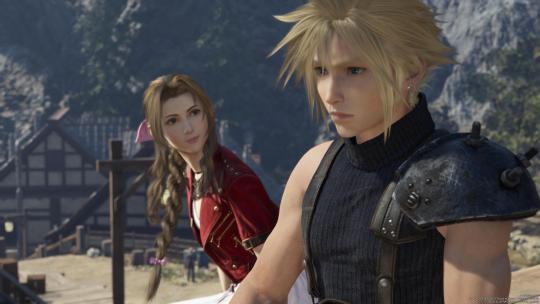
Zack and Aerith’s Long Lost Love / Tragic Love (Canon)
Zack and Aerith’s relationship is the quintessential tragic love story in Final Fantasy VII, defined by separation, longing, and loss. Aerith’s first love, Zack, vanishes from her life without explanation, leaving her with unanswered questions and unresolved feelings. Even as she begins to move forward, her heart never fully lets go of Zack, who is revealed to have fought valiantly to return to her—only to tragically lose his life in the process.
The tragedy of their love lies in the fact that both characters hold onto each other, but fate conspires to keep them apart, making their love story one of the most emotionally poignant elements in the game. Even in death, their connection endures, with Zack and Aerith appearing together in the Lifestream in ACC, symbolizing a love that transcends life itself. This arc, while bittersweet, resolves the narrative of Aerith’s romantic life—Zack was her true love, and Cloud was a reflection of the man she had lost, not a new love interest.
Their tragic love story dispels the myth of a love triangle in Final Fantasy VII, emphasizing that Aerith’s heart always belonged to Zack, even as she developed a bond with Cloud during her journey.

All of the relationships in the game are important. However, Cloud/Tifa & Zack/Aerith are the canon, mutual romantic relationships of Final Fantasy VII. Cloud/Aerith have a cherished friendship, but any romantic subtext of their relationship in the game is used as a vehicle to drive the conflicts and truths of the canon relationships forward. This is accomplished through illusions and subversions in storytelling, as well as creating internal conflict for the characters and canon relationships.
FFVII’s storytelling is deliberately designed to mislead the player through incomplete truths and emotional misdirection, including the use of red herrings, illusions, unreliable narration, and the omission of critical information or context. Cloud’s confused memories and persona, coupled with Aerith’s initial attraction to him based on his similarities to Zack, create the illusion of a romantic triangle, but the deeper truths—Cloud’s unresolved trauma and false identity, Tifa’s role as the keeper of Cloud’s real past and his true feelings, and Aerith’s ultimate fate as the Planet’s protector and her true love being Zack—gradually dismantle this illusionary love triangle.
I cannot stress enough that FFVII is not a love drama or soap opera where the game’s conflict centers on romantic rivalries, betrayal, deception, or morally questionable behaviors.. It’s a complex story that focuses on themes of life, loss, identity, self-discovery, legacy, and on and on.
Love - all kinds of love, including romantic, platonic, and familial - is a theme of FFVII, but truly and holistically, not for the sake of creating meaningless drama between the characters. The relationship dynamics appear messy at times in the earlier parts of the story, but these dynamics are designed to help us reach the proper conclusions about the story and the characters’ arcs, and how true love is a vehicle for reaching resolution for both.
Player’s choice is irrelevant to the plot. You cannot decide or alter the story structure or direction or individual character arcs or relationships. The most you can do is view the game through a slightly different lens by gaining an expanded understanding of character arcs and motivation with new replays.
Shipping is a fandom construct. It’s meant to be fun, and you can ship whatever you like. But shipping doesn’t intersect with the facts of a story or its narrative. Lying about any piece of media to convince yourself or others of its canonicity is bizarre behavior.
Respect the work and its intention, while having your shipping fun within your fandom. Don't embarrass yourself by saying an FF protagonist kissing the girl he’s loved since childhood and joined the army to impress means nothing, or worse, proves he the opposite of a hero.
You can ship your fanon without doing all that.
Last thing: Reunion is a primary theme of Final Fantasy VII. You may have noticed that it is also a primary theme for both of the canon romantic relationships. Personally, I believe that Part Three is going to drive this message home in a way that is unmistakable. I also believe that both lovers' reunions will be instrumental in resolving all of the conflicts of FFVII in the final game.
It’s not a coincidence that both reunions will take place in the Lifestream, or that they've been foreshadowed by the presence of the yellow flower.


I also believe that the dual Rebirth cover arts, described by Tetsuya Nomura as Sephiroth "tearing Cloud and Zack's worlds apart" are heavily foreshadowing the resolution of these relationships along with their connection to the the larger story structures of FFVII/FFVIIR.
Let's wait and see when Part 3 comes along.

#ffvii#cloud strife#cloti#tifa lockhart#final fantasy vii#ffviir#ffvii remake#ffvii rebirth#ltd#love triangle#love triangle debate#shipping discourse#shipping dynamics#shipping drama#shipping discussion#shipping debates
78 notes
·
View notes
Text
Welcome to McKirk Week 2024!
Held from 20th – 26th May, McKirk Week is a creation event focused on the Kirk/McCoy pairing, across all universes.
HOW IT WORKS:
There are three prompt lists – Trek, Gen, and NSFW. Trek are prompts based on the Star Trek universe, Gen are general prompts and tropes, and NSFW are of course the NSFW prompts. You’re welcome to pick from any prompt list (or even combine a few), and you can fill as many or as few prompts as you fancy.
Your creations can be any form of media: art, fic, edits, videos, web weaves, memes, playlists, fic rec lists, cosplay… the list goes on! As long as you can make it McKirk, it counts.
And on that note: this is a McKirk event so McKirk should be the main pairing in your works. Background ships, side pairings, and poly ships are okay as long as Kirk and McCoy are the focus.

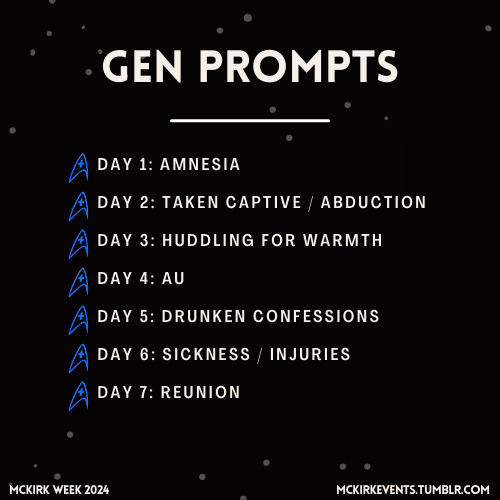
NSFW prompts, plaintext transcript, and rules below the cut:
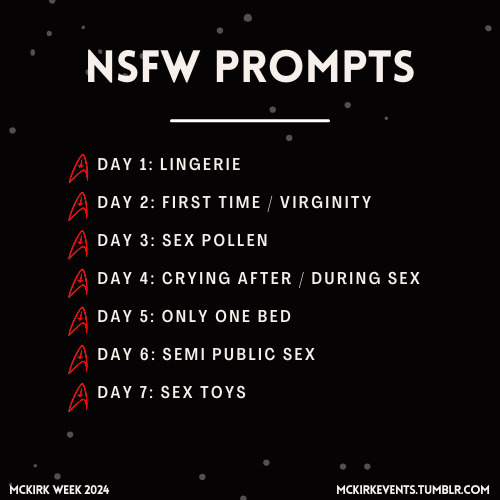
PROMPT LISTS:
TREK PROMPTS
Day 1 (20th): First Contact Day 2 (21st): Shuttle Crash Day 3 (22nd): Clones / Doppelgangers Day 4 (23rd): Shore Leave Day 5 (24th): Old Married McKirk Day 6 (25th): Transporter Malfunction Day 7 (26th): Diplomatic Dinner
GEN PROMPTS
Day 1 (20th): Amnesia Day 2 (21st): Taken Captive / Abduction Day 3 (22nd): Huddling for Warmth Day 4 (23rd): AU Day 5 (24th): Drunken Confessions Day 6 (25th): Sickness / Injuries Day 7 (26th): Reunion
NSFW PROMPTS
Day 1 (20th): Lingerie Day 2 (21st): First Time / Virginity Day 3 (22nd): Sex Pollen Day 4 (23rd): Crying After/During Sex Day 5 (24th): Only One Bed Day 6 (25th): Semi Public Sex Day 7 (26th): Sex Toys
THE FINER DETAILS:
You’re welcome to start on your piece(s) whenever you’d like, but please refrain from posting them until the relevant day(s) where possible.
When posting your works to tumblr, please use the tag # mckirkweek2024 and/or tag us @mckirkevents so that we can find your posts to reblog.
There is an AO3 collection HERE that you’re welcome to add your McKirk Week 2024 works to.
There is no deadline to post your works (we get it, life gets in the way sometimes), and the AO3 collection will be open indefinitely.
You’re welcome to create whatever you want, but please do tag/warn as appropriate for NSFW and other sensitive content.
For tumblr posts, please do add a mature label to explicit imagery, and/or crop and link externally to the full image, in order for us to be able to reblog.
And most importantly: have fun, be yourself, and keep it McKirk!
ANY QUESTIONS?
FAQ coming soon, but until then, send us an ASK!
142 notes
·
View notes
Text
Some tea from Richard Speight, Jr. about filming Cas’s testament scene has surfaced from DLC6. [x]
nothing cut from script to screen but they added things, such as Cas having to paint the sigil on the door and leaving the bloody hand print on Dean’s shoulder [my note: wbk about the additions during filming. There's still the matter of the spanish dub because the latam dubbing team felt a verbal I love you from Dean, made sense. And a few other lingering questions that have not actually been resolved and we may never know, but I'll go along. If Rich is happy with what was filmed and got to screen in the US, I'm glad. I love 15.18 either way. Rich's comments also goes to show how collaborative making tv is and how fluid the process can be.]
Rich said the scene wasn’t intended to be about Dean’s reciprocation, it was to give Cas his moment to speak his truth, to speak his love for Dean, and Cas didn’t expect an answer back, he just wanted to be heard, wanting Dean to know. [my note: makes sense to me, and it’s what I’ve thought about Cas pov. Cas pov not being the same as audience pov and what the story might need next and what Dean’s needs are. But for that scene, Cas feels complete. It also very much means the emotional story from Dean's side is not resolved. Dean wasn't given his chance yet, by creative design, perhaps because the only way they could get this greenlit at all is if it was only Cas who got to speak. We'll see what happens next.]
Rich saying because they did many takes of the scene with Dean’s emotional reactions, there are shots where Dean is crying more, or crying less. Editing put together different angles from different takes. [my note: the irony that naysayers are already trying to weaponize this to shut down the idea that anything got cut when per Rich himself, the facts on the ground are that the full range of Jensen’s acting for Dean’s response got reduced. No shade on Rich. But let's not erase or deny what was going on with Jensen's acting and how Jensen gave 110% and what wound up on screen was about 80% of whatever work Jensen did. Dean wept more than we saw, even before Dean was on the dungeon floor sobbing. Jensen’s performance as it stands is beautiful and powerful and full of emotion. It has taken an inordinate amount of hate and erasure, which is 100% cynical concern trolling to deny Dean’s feelings for Cas. More shots of Dean crying openly wouldn’t stop it, there’s no excuse for those responses. What’s there is loud enough. Only the most willfully cynical gaze could deny the love and anguish Dean showed.]
Rich said the parallel for John and Mary’s confession in TW 1x07 to 15x18 is a “coincidence” yet went on to talk about the trope of confessing love in a life or death situation and cited Leia and Han Solo among others [my note: it was also used again by an ep Rich recently directed in another piece of media I won’t say so I don’t spoil it. Also I’m laughing about how it seems he answered this. Total coincidence!! And spn 15.18 is like TW 1x07 is like Han and Leia and love confessions in dire situations is a common (romantic) trope. Pls, if anybody is taking away from this some kind of shutdown on creative recognition of the Destiel implications of it all, I don’t even want to know, I’ve had my fill of poor comprehension skills, poor critical thinking, and poor media literacy, oh my god]
Rich saying he was glad Cas’s words meant a lot to queer fans and that he feels it was important and a “bold” move that Bobo and Misha fought for. <3
So that's confirmation from director now, to add to writer intention, both actors, and an EP who greenlight Bobo's pitch for Cas’s testament as romantic. That is canon. That is a lock.
Cas's testament started out carefully padded into an “open to interpretation” zone. We have watched it be eased out of it and into the open.
I’m pleased it's openly acknowledged for what it is...and what I knew it was when the ep aired. I did expect it would be eventually, and would take some time. I’m glad it's here now.
As always, my appreciation for the work Rich, Bobo, Jensen, Misha did on 15.18 <333
109 notes
·
View notes
Note
How do you analyze so good I'm really impressed and honestly wonder if I can learn from you
It's a skill, so the good news is, you can practice and get better at it!
Read A Lot/Gain Context
Analysis often means making comparisons or drawing from external context - one of the best things you can do if you want to be better at analysis is to try to cram your head with as much knowledge as possible. The time period, culture of origin, and where the author slots into those are usually major influences on a work (in Homestuck's case, much of it is a direct commentary on the internet culture it emerged from, and missing that part of it can drastically influence how the story reads).
Also important are the works the author themselves are inspired by. You've likely heard some variation of "nothing is original." We're actually really lucky with Homestuck in that regard, as the work is highly referential, and you can glean a lot by looking at what it references (for example, if you watch Serendipity, one of Karkat's favorite movies, which is titledropped during the troll romance explanation, you will understand Karkat so much better). This applies to things like mythological allusions - you'll hardly know why it matters that Karkat is a Christ figure if you don't know what the general outline of the Christ story is, nor will you pick up on the Rapture elements of Gamzee's religion or the fact that Doc Scratch is The Devil, etc. The key to picking up a lot of symbolism is being aware that the symbols exist.
And last, it helps to read a lot of media and media analysis so you can get a better understanding of how media "works" - how tropes are used, what effect language has, what other entries into the genre/works with similar themes/etc. have already done to explore the same things as the piece being analyzed is doing - and what other people have already gleaned and interpreted. I've mentioned before that many people seem to find Homestuck's storytelling bizarre and unique when it's actually quite standard for postmodernism, the genre it belongs to. But you're not going to know that if you've never read anything postmodern, y'know? I also often prepare for long character essays by reading other peoples' character essays - sometimes people pick up on things I miss, and sometimes people have interpretations I vehemently disagree with; both of these help me to refine my take on the matter.
Try to Discard Biases/Meet the Work Where It Is
Many will carry into reading media an expectation of what they want to get out of it. For example, one generally goes into a standard hetero romance book expecting a female lead, a male love interest, romance (of course), and a happy ending for the happy couple. If the book fails to deliver these things, a reader will often walk away thinking it was a bad book, even if the story told instead is objectively good and interesting. We actually see this a lot with Wuthering Heights, which receives very polarizing reviews because people go into it expecting a gothic romance, when it's really more like a gossip Youtube video spilling the tea on some shitty rich people (and it's really good at being that).
There's nothing necessarily wrong with this when reading for pleasure and personal enjoyment, but it presents a problem when attempting to analyze something. There's a concept called the "Procrustean bed," named after a mythological bandit who used to stretch people or cut off their limbs to fit them to a bed, that describes "an arbitrary standard to which exact conformity is forced." Going into a media reading with expectations and biases often results in a very Procrustean reading - I'm sure we've all seen posts complaining about how fanfic often forces canon characters to fit certain archetypes while discarding their actual character traits, etc.
Therefore, when reading for analysis, it's generally a good idea to try and discard as much bias and expectation as possible (obviously, we are never fully free of bias, but the effort counts) - or, perhaps even better, to compartmentalize those biases for comparison while reading. For example, Hussie talks at length about what they INTENDED Homestuck to be, and, while reading, I like to keep Hussie's words to the side while I try to experience the comic fresh, seeing what choices were made in accordance with Hussie's intentions, or where I think Hussie may have fumbled the messaging. At the same time, I try to let the work stand on its own, set in its proper context.
I'd say this is the number-one problem in fandom analysis. For example, people hear from the fandom that Eridan is an incel or a nice guy, so they interpret everything he says and does to fit that belief, or ignore any contradictory evidence. Or they fall for the character's façade that's meant to be dismantled by the viewer. Some works are fairly shallow and accessible, wearing all their meaning on their sleeve (or are Not That Deep, if you prefer meme-talk), and problems arise when a work is, in fact, That Deep, because someone biased towards the former will discard evidence that a work is the latter. This isn't exclusive to HS - it's happened in basically all of my fandoms - which is a statement to how easy it is to fall into this way of thinking.
Even without knowing that Hussie had coming-of-age themes in mind, for example, characters will talk about being kids and growing up. Knowing that Hussie has explicitly said that that's one of HS's themes serves as extra evidence for that interpretation, but the work itself tells you what it's about - if you're willing to listen to it.
Even If the Curtains are Just Blue, That Still Means Something
This is the next biggest fandom stumbling block - thr insinuation that when things in a work are put into the work without more explicit symbolism, that that means they're a discardable detail. This one is more about making a mindset shift - details aren't discardable, even if they don't appear to have been made with the explicit intention to mean something. Everything kind of means something.
First of all, whether or not the curtains are Just Blue is often highly dependent on the work. For example, in something made in large quantities with little time, staff, and budget - say, for example, one of the entries into the MCU's TV shows - there likely isn't too much meaning behind a choice of blue curtains in a shot (although you'd be surprised how often choices in these constrained environments are still very deliberately made). In a work like Homestuck, however, so terribly dense with symbolism and allegory, chances are, the blue curtains DO hold some special meaning, even if it's not readily apparent.
However, even in cases where a choice is made arbitrarily, it still usually ends up revealing something about the work's creative process. Going back to our MCU example, perhaps the blue curtains were chosen because the shot is cool-toned and they fit the color grading. Perhaps they were chosen because the director really likes blue. Perhaps the shot was filmed at an actual location and the blue curtains were already there. Or, even, perhaps the blue curtains were just what they had on hand, and the show was made too quickly and cheaply to bother sourcing something that would fit the tone or lend extra meaning. These all, to varying degrees, say something about the work - maybe not anything so significant that it would come up in an analysis, but they still contribute to a greater understanding of what the work is, what it's trying to say, and how successful it is at saying it.
And this applies to things with much higher stakes. For example, Hussie being a white US citizen likely had an effect on the B1 kids being mostly US citizens, and there was discourse surrounding how, even though they were ostensibly aracial, references were made to Dave's pale skin. Do I think these were deliberate choices made to push some sort of US superiority; no, obviously not. But they still end up revealing things about the creation of the work - that Hussie had certain biases as a result of being who they were.
Your Brain is Designed to Recognize Patterns, So Put That to Use
So with "establish context" and "discard expectations" out of the way, we can start getting into the nitty-gritty of what should be jumping out at you when attempting to understand a work. One of the most prominent things that you should be looking for is PATTERNS.
Writing is a highly conscious effort, which draws from highly unconscious places. Naturally, whether these patterns are intentional or unintentional is dependent on the author (see again why reading up on a work's context is so important), but you can generally bet that anything that IS a pattern is something that holds significance.
For example, Karkat consistently shows that he's very distraught when any of his friends get hurt, that he misses his friends, even the murderous assholes, that he's willing to sit them down and intervene on their behalf, despite all his grandstanding to the contrary. We are supposed to notice that Karkat actually loves his friends, and that he's lying when he says he doesn't care about them.
Homestuck is very carefully and deliberately crafted; if something comes up more than once, it's a safe bet to assume that you're supposed to notice, or at least feel, it. Don't take my word for it:
Basically, [reusing elements is] about building an extremely dense interior vocabulary to tell a story with, and continue to build and expand that vocabulary by revisiting its components often, combining them, extending them and so on. A vocabulary can be (and usually is) simple, consisting of single words, but in this case it extends to entire sentences and paragraph structures and visual forms and even entire scenes like the one linked above. Sometimes the purpose for reiteration is clear, and sometimes there really is no purpose other than to hit a familiar note, and for me that's all that needs to happen for it to be worthwhile. Triggering recognition is a powerful tool for a storyteller to use. Recognition is a powerful experience for a reader. It promotes alertness, at the very least. And in a lot of cases here, I think it promotes levity (humor! this is mostly a work of comedy, remember.) Controlling a reader's recognition faculty is one way to manipulate the reader's reactions as desired to advance the creative agenda.
But this applies to less deliberately-crafted work, too; for example, if an author consistently writes women as shallow, cruel, and manipulative, then we can glean that the author probably has some sort of issue with women. Villains often being queer-coded suggests that the culture they come from has problems with the gays. Etc. etc.
This is how I reached my conclusion that Pale EriKar is heavily foreshadowed - the two are CONSTANTLY kind to each other, sharing secrets, providing emotional support, etc. etc. It's why that part of my Eridan essay is structured the way that it is - by showing you first how consistently the two interact in suspiciously pale-coded ways, the fact that a crab is shown in both Eridan's first appearance AND his appearance on the moirallegiance "hatched for each other" page becomes the cincher of a PATTERN of the two being set up to shoosh-pap each other.
A work will tell you about itself if you listen. If it tells you something over and over, then it's basically begging you to pay attention.
Contrast is Important, Too
Patterns are also significant when they're broken. For example, say a villain is constantly beating up the protagonist. Here's our pattern: the hero is physically weaker than the villain. In a straight fight, the hero will always lose.
And then, at the mid-season two-parter, the hero WINS. Since we've set up this long pattern of the hero always losing to this villain, the fact that this pattern was disrupted means that this moment is extremely important for the work. Let's say the hero wins using guile - in this case, we walk away with the message that the work is saying that insurmountable obstacles may have workarounds, and adaptability and flexibility are good, heroic traits. Now let's say the hero won using physical strength, after a whole season of training and practicing - in this case, we say that the work says hard work and effort are heroic, and will pay off in the end.
In Homestuck, as an example, we set up a long pattern of Vriska being an awful, manipulative bitch, and a fairly remorseless killer. And then, after killing Tavros, she talks to John and admits that she's freaking out because she feels really bad about it. This vulnerability is hinted at by some of her earlier actions/dialogue, which is itself a pattern to notice, but it's not really explicit until it's set up to be in direct contrast to the ultimate spider8itch move of killing Tavros. This contrast is intended to draw our attention, to point out something significant - hey, Vriska feels bad! She's a product of her terrible society and awful lusus! While it's shitty that she killed Tavros, she's also meant to be tragic and sympathetic herself!
Hussie even talks about how patterns and surprises are used in tandem:
Prior to Eridan's entrance into the room, and even during, the deaths were completely unguessable. After Feferi's death, Kanaya's becomes considerably more so, but still quite uncertain. After her death, all bets are off. Not only do all deaths thereafter become guessable, but in some cases, "predictable". That's because it was the line between a series of shocking events, and the establishment of an actual story pattern. The new pattern serves a purpose, as a sort of announcement that the story is shifting gears, that we're drifting into these mock-survival horror, mock-crime drama segments, driven by suspense more than usual. The suspense has more authority because of all the collateral of unpredictability built up over time, as well as all the typical stuff that helps like long term characterization. But now that the pattern is out in the open, following through with more deaths no longer qualifies as unpredictability. Just the opposite, it would now be playing into expectations, which as I said, can be important too. This gear we've switched to is the new normal, and any unpredictability to arise thereafter will necessarily be a departure from whatever current patterns would indicate.
Patterns are important because they tell you what baselines the work is setting - what's normal, what's standard, what this or that generally "means." Contrast is important because it means something has changed, or some significant point is being made. They work in tandem to provide the reader with points of focus in the story, things to keep in mind as they read, consciously or unconsciously.
Theme
I'm talking about this stuff in pretty broad and open terms because stories are so malleable, and so myriad, and can say so many things. There are stories where horrible cruelties are painted as good things - propoganda is the big one, but consider all the discourse around romance books that paint abusive/toxic relationships as ideal. There are stories where the protagonist is actually the villain, and their actions are not aspirational, and works where everyone sucks and nobody is aspirational, and works where everybody is essentially a good person, if sometimes misguided.
This is, again, why outside context is so important, and biases need to be left at the door. For example, generally speaking, one can assume that the protagonist of a children's cartoon is going to be an aspirational hero, or at least a conflicted character who must learn to do the right thing. However, there are even exceptions to this! Invader Zim, for example, features an outright villain protagonist - a proud servant of a fascist empire - and for a lower-stakes example, the Eds of Ed, Edd, n' Eddy are the neighborhood scammers, constantly causing problems for the other characters with their schemes.
Thus, how do we determine what any particular narrative's stance on a given topic is? It's a difficult question to answer because every narrative is different. If I say something like, "the things that bring the protagonists success in their goals are what the narrative says are good," then we run into the issue of villain/gray morality protagonists. To use moral terms like "hero" and "villain" instead runs into the problem of defining morality within a narrative in the first place. But you have to draw the line somewhere.
So that brings us to themes.
Now, as with a lot of artistic terms, "theme" isn't necessarily well-defined (this isn't helped by the way the word is used colloquially to mean things like aesthetic, moral of the story, or symbolism). Wikipedia says: "In contemporary literary studies, a theme is a central topic, subject, or message within a narrative," but this is still very broad and hard to work with, so I'll give it a shot.
A theme is what a work says, beyond the literal series of events. Sometimes a theme is obvious - the theme of Boy Who Cried Wolf is that if you become famous for lying, you won't be believed when you tell the truth. Sometimes a theme is one of many - for example, Disney's Cinderalla says that kindness and virtue will eventually be recognized and rewarded, and that cruelty is interlinked with ugliness. Sometimes a theme is unintentional - for example, how Disney's body of work tends to villainize queer-coded characters. Sometimes context and the passage of time changes the theme - for example, Snow White originally held a message of hope for wartime families that domestic normalcy would one day return, but is now seen as anti-feminist as it appears to insinuate that a woman's place is in the kitchen, and her happiness is in marriage to a man. And sometimes a theme is not something you agree with.
In any case, a theme is a meaning to be gleaned from the text, more broad and universally applicable than the text itself. After all, we humans have traditionally always used story to impart meaning; our oldest epic, The Epic of Gilgamesh, contains within it several themes, most famously that of accepting one's mortality. It's startling, really, how applicable the story is to this day, even if specific details have become obtuse or unsavory to a modern reader.
This is, again, why it's so important to engage with a text on its own terms, in its own context, with as little bias as possible. A story's themes are not necessarily apparent, and commonly implied rather than stated outright, and approaching the story with expectations can easily lead to a Procrustean twisting of the facts to fit those expectations. A theme should emerge to the analyzer out of the reading, not the other way around.
Identifying theme gets easier with practice, and largely comes down to identifying patterns within the narrative (alongside looking at context and symbolism, of course). What does the narrative consistently touch base on? Are there any references; is there any symbolism? What does the story deem "normal," "good," or "bad"? How are ideas developed, and why? Why did these events happen, and are those motivations echoed anywhere else?
Homestuck is very complex and tackles many topics at once, and explaining why it's a coming-of-age would basically require a whole second essay, so I'll use a simpler and more popular example (like I've been trying to do) - let's say, Shrek.
The most obvious theme of Shrek is that beauty does not equate goodness, that one mustn't judge a book by its cover. The opening sequence is LITERALLY Shrek ripping out pages of a fairy tale book to use as toilet paper, and the movie ends with Fiona finding that her happiest, truest self IS as an ugly ogre. Shrek's main character conflict is that people immediately judge him as cruel and evil because he's ugly, and the characters' lowest points occur because Fiona is similarly insecure about her ogre half, considering it unlovable.
But there's other stuff in there, too. For example, if you know that Dreamworks and Shrek were founded after a falling out with Disney, then the beautiful, sanitized city of Dulac, with its switchback queue and singing animatronics add to this theme of a direct refutation of traditional Disney fairytale values, mocking them as manufactured, inhuman, and even cruel in the way that they marginalize those who don't fit an ideal of beauty. Again we see the opening sequence - defacing a fairytale - as support for this, but also the way that Dulac is displacing fairytale creatures. There's a moment where Gepetto literally sells Pinocchio, which can easily be read as a commentary on the crass commercialization and exploitation of fairy tales Disney likes to do.
And then, of course, there are lesser, supplementary themes. Love being a powerful positive force is one - Donkey is able to rally Shrek after he truly reciprocates Dragon's love for him (which echoes the theme of not equating goodness with beauty, as Dragon is still big and scary), and it's true love's kiss that grants Fiona her happy ending.
And then there's stuff that's unintentional. There's all this work done about how beauty =/= goodness, but then they made the villain incredibly short, which is a traditionally unattractive physical feature. So, does that mean that ugly things can be beautiful unless that ugliness is specifically height?
Sometimes, authorial intent does not match up with result - but in those instances, I think the most is revealed about the author. Modern Disney products tend to be very cowardly about going anti-corporation and pro-weirdness, despite their usual feel-good tones and uplifting themes - and that says a lot about Disney, doesn't it. That's why I think it's still important to keep authorial intent in mind, if possible, even if they fumble what they say they've set out to do.
Obviously, Lord Fuckwad being short doesn't REALLY detract from the overall message - but it's still a weird hitch in the themes, which I think is interesting to talk about, so you can see where personal judgement and biases DO have to be applied. There are two options here, more or less - either one believes that Shrek is making an exception for short people, who are of the Devil, or one believes that the filmmakers did a bit of an oopsie. Barring an outright statement from the filmmakers, there's no way to know for sure.
We can say a work has very complex themes when it intentionally explores multiple ideas very deeply. We can say a work has shallow themes when it doesn't have much intentional meaning, and/or that meaning is explored very lightly. The labyrinthine storytelling of Homestuck, with its forays into mortality, morality, and growing up, chock full of symbolism and pastiche and allusions, is a work with complex themes - especially as compared to the average newspaper comic strip, although they ostensibly share a genre.
We can say a work has very unified themes when these themes serve to compliment each other - the refutation of Disney-esque values, and love as a positive driving force, compliment the main theme in Shrek of not judging books by their covers, of beauty not equating to goodness. Ugly things are worthy of love, and those who push standards of beauty are evil and suck.
Similarly, we can say a work has unfocused or messy themes when the themes it includes - intentionally or not - contradict, distract, and/or detract from each other. Beauty has no correlation to goodness... unless you're short, in which case, you are closer to Hell and therefore of evil blood. To get a little controversial, this is actually why I didn't like Last Wish very much - there are approximately three separate storylines, with three separate thematic arcs, going on in the same movie, none of which particularly compliment each other - so the experience was very messy to me, story-wise, even though it was pretty and the wolf was hot. This is why we feel weird about Disney pushing anti-corporate messages, when they're a big corporate machine, or why it's easy to assume Homestuck was written poorly if you don't like Hussie - we want themes to be coherent, we want context to be unified with output.
Tone
Tone is somehow even harder to define than theme. It's like, the "vibe" of a work. For example, you generally don't expect something lighthearted to deal with the realistic, brutal tragedies of war. Maybe it'll touch on them in light, optimistic ways, but it isn't about to go All Quiet on the Western Front on the reader. By the same token, you don't expect fully happy endings out of the melodrama of opera, or frivolous slice of life from something grimdark.
Tone, too, is something people often wind up Procrusteanizing, which makes discussion difficult if two people disagree. If I read Homestuck as unwaveringly optimistic, with its downer ending the result of an author fumble, I'm pretty much going to irreconcileably disagree with somebody who reads Homestuck as though it's always been a kind of tragedy where things don't work out for the characters. Since it's even more difficult to define than theme, I'm not even really going to bother; I just felt like I had to bring it up because, despite its nebulosity, it's vital to how one reads and interprets a text. Sometimes I don't have a better answer for why I dislike a certain interpretation other than that it doesn't suit the work's tone. I generally try to avoid saying that, though, because it winds up smacking of subjective preference.
In summary... analysis is about keeping everything in mind all the time! But i swear, it gets easier the more you do it. Happy reading!
121 notes
·
View notes
Note
The pearl clutching about supposed incest is ridiculous… so many pieces of media employ the high school sweethearts/grew up together trope for straight couples and you never see people up in arms about it, why such vitriol when a gay ship has a similar story?
People who use the word incest as a spectrum drive me insane.
Like yall, incest means sexual intercourse with a relative within the prohibited degree of consanguinity. Consanguinity means BLOOD RELATIONSHIP. You can't toss around the word incest to vaguely mean that these two guys were not raised under the same roof, did not grow up together, didn't even MEET up to when one was 17 and the other 20, and the only tie they have is that as young vigilantes, they were mentored by the same guy.
I don't give a shit about your feelings on how "it looks like incest" because it's not. You can't assign random words to things and demand they're true. Jason and Tim have less personal ties than Dick and Wally for fucks sake - at least Dick and Wally lived under the same roof for a time and have been close since they were 12ish. So I'm sorry but idgaf about people whining that we need to tag "batcest" and such because they get triggered by idk what the fuck, because that is not incest, it can never be incest in any planet or any galaxy regardless of how you spin it, so go clutch your pearls somewhere else and fuck off. I'll tag things when the tag APPLIES.
Also, how come it's "batcest" when it's Tim and Jason, but it's totally fine when it's Tim and Stephanie? How come it's "batcest" when it's Jason and Dick, and all good when it's Dick and Barbara? Or when it's Barbara and Tim, or Dick and Helena Bertinelli?
When you only give a pass to the het couples it really starts sounding like the umpteenth fucking excuse for homophobia.
#my asks#I have felt a physical revulsion for the word batcest since the very first time I read it#also yall I REALLY LIKE incest ships and I FUCKING WISH this was one but it's just NOT.#like I am 100% that guy which ships siblings with the right circumstances because guess what I'm human and I have kinks#but this does not apply to any bats or birds because guess fkin what they're not siblings#I hate modern puritanism so much I am so tired#fuck antis
90 notes
·
View notes
Text

First, let's just get this out of the way for I'm still seething about the storytelling mess that was Familiar By Thy Side (and parts of Darkest Hour). I want to appreciate the fact that this masterpiece of an episode is more than 10 minutes shorter than the previous one, which had so many unnecessary parts; this half hour of an emotional roller coaster ride has done so much more to progress the ENTIRE show's plot. We finally pieced the puzzle of Lilia's kookiness and her "jumps". We got so much more Teen lore from this than the Teen episode itself. We now have resolution to all the (previous) trials, Alice's… state, Rio's real identity, Jen's importance… We even dealt with the damned Salem Seven as a bonus. So many things happened but it was not overwhelming at all. If this were a suit I'd say it's bespoke indeed.
Now, what I truly loved about this episode is how it was able to paint a non-linear narrative with so much finesse, with each twist and turn taking us to different parts of a single timeline, without making it nauseating, all while pulling the threads to secure the stitches in place and make sure the seams are tight without it puckering. Like embroidery that adds patterns on different areas, we finally sew it all up to see the final tapestry.

The whole fandom has definitely theorised all about how Lilia's weird "inserts" are connected, each episode giving us more pieces to make sense of. But of course it feels infinitely better seeing it ourselves, and how they make up a whole linear timeline in Lilia's mind-POV, while Agatha and the gang are left confused with the breadcrumbs of phrases left for them at different intervals. I absolutely loved how this time discrepancy was used. No more boring-ass unnecessary flashbacks filled with drivel. This time, the past is completely enmeshed with the present, and is used to decide on what's needed to be done to get the desirable future outcome.
This "time is non-linear, it exists simultaneously at all points" phenomenon has certainly been used in countless other media (Fringe and its Observers come to mind), but I love how actively Lilia used it. Her being in that tea-leaf reading lesson held so much significance to her as a Trial Subject, as a Coven Member, and as an Individual Witch. Her time in the gazebo reminds me of The Time Traveller's Wife; existing in all the times, getting sent and pulled back and sent again.

That gazebo was both her prison and her escape. Being stuck in that place made her think her life is a rigid series of unfortunate events, and she can't do anything but be helpless in the face of tragedies that befall everyone she ever cares about. Having had the power to see the future yet be unable to prevent her original coven's death perpetuated her self-depreciation, thus she spent 450-ish years giving in to the usual witchy tropes and misconceptions (the palm reading and tarot tents and the minor scams here and there, but a girl's got bills, ya know), even if it hurts her in the process.
So then, prison AND escape, right? Being tethered to that specific point in time, with her mentor guiding her path to self-rediscovery, was crucial to Lilia's ability to escape her shackles, because she needed to realise she put the shackles on herself. Having a powerful but dangerous gift and being actively afraid of it is quite the self-fulfilling prophecy of doom. You're scared so you stop using it altogether but then you can't control it so all that suppression does more harm than good (looking at you, Charles. What you did to Jean was cowardice. Also, hello? Elsa??). Lilia exclaiming "I was bad at tea leaves" at her literal first day of training might just have been the reason why she spent her life believing she's bad at it. She planted the very idea in her brain (Inception? lol).

This whole forward and back travel from the Road to the Gazebo is instrumental to Lilia coming to terms with the idea that time for her does not move in a straight line. Her confession to Jen, paired with her mentor's wise words, makes her admit that she does, in fact, have a problem. First step to recovery and all that. This then leads to her unravelling the next layer of her issues, which is death to all she holds dear. Granted, she has seen so much death within her lifetime. 450 years of life would do that to you. Something she cannot possibly control.
But that's the thing, isn't it? She was never supposed to control anything. Her job as a Trial Subject, a Coven Member, and an Individual Witch is to SEE. See the trial with the eyes of 450 years simultaneously happening, the heart of someone who wants to protect her coven, and the power of a witch who can walk through the threads of time's tapestry. Once she sees that, and once she accepts that Death is not a Bad Thing, and once she lets go of control, the pieces started to fall into place.

Which then makes her SEE that she's the Traveller. This tarot reading is about her, and she has been sprinkling the answers throughout her timeline, waiting to be plucked by the Awakened Calderu of Now. Give credence to who she is, and her power that Must Not Be Feared. Recognition that she needs her Coven in order to succeed. Acceptance for what she has lost along the way. Welcoming the path ahead no matter where it leads her. Embracing heartbreak, sorrow, and grief. Undertaking miraculous transformation. And finally, the beginning of the end, the end of the beginning.

How fitting is it that we see the start and realise it was actually the end? The fall, initially thought as something dangerous, was in fact just part of the journey. Death, once feared, now embraced like an old friend. Something that perpetuates the cycle. The past, shrouded in darkness, now illuminating the path ahead.
So now we see, she wasn't actually falling. If you ask me, she was flying. Flying to that gazebo in a garden somewhere in Sicily, 450 years ago, about to start her very first lesson in reading tea leaves. Her mentor saying, "Let us begin", and her ultimately saying, "I loved being a witch".

#lilia has finally come full circle#and now her journey begins#agatha all along#lilia calderu#patti lupone#this is a patti lupone appreciation post#this is a lilia calderu appreciation post#AAA episode 7 is Marvel's best entry in storytelling and writing
37 notes
·
View notes
Note
Hii, hope you're doing well!! I've been meaning to check out more c-dramas. I've never really watched any, but I keep seeing them on my dash and want to start giving some a shot since I watch every other type of drama (BL or otherwise lol). I saw you post often about c-dramas, so I wanted to ask if you had any other recs besides Tender Light (which I'm planning on watching when it's done)? I'm more curious about c-dramas in general rather than any specific genre, since I'm so new to them
Hello, thank you for the ask! I'm glad my obsessive Tender Light posting has got you curious about cdramas. Some of my all time favorite dramas are from Mainland China, and I would be happy to share some recs! Since you are looking for a general sense, I am just going to give you a sampling of some of my personal favs.
Tender Light
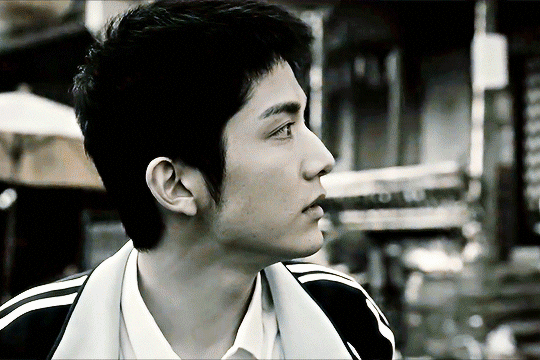
Obviously I will be taking this opportunity to talk up this drama some more, which will be ending its run this weekend. This is, hands down, my favorite drama of the year and easily going on my top 10 dramas of all time list. It's one of the most gorgeous and precise and unflinching pieces of media I have ever seen. This is definitely one for people who love smart mystery writing, dark themes (I mean this for real, if you have a lot of triggers ask for CWs), and explorations of the human condition. It will be staying with me for a long time.
Go Ahead
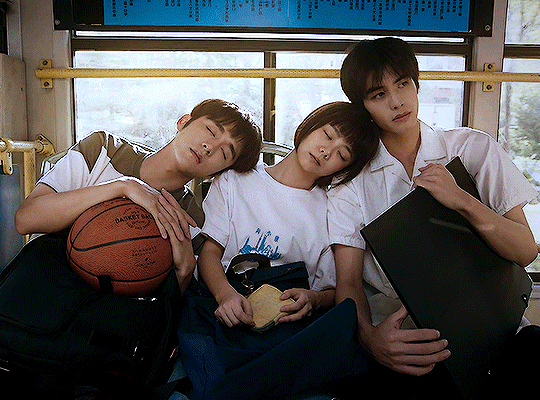
Another of my all time favs (and with cast crossover from Tender Light), this is a family drama that digs deep on the meaning of family, finding your people, and resilience through intergenerational trauma. I love it so so much (I am actually rewatching it right now).
Lighter & Princess
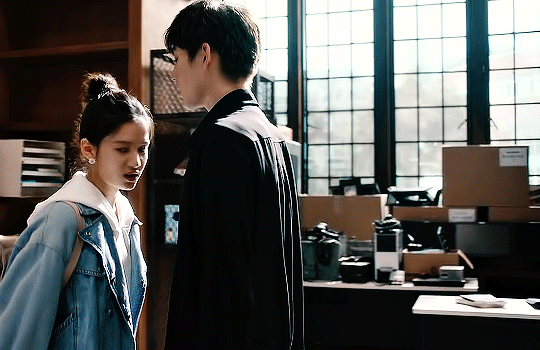
A fantastic romance and owner of a coveted spot on the ride or die drama couples list. In this story you get to watch these two fall in love twice, first in college and then as adults, and both times it's epic.
Reset
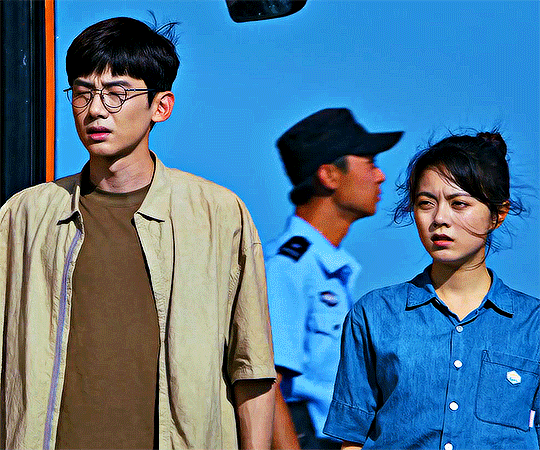
How about a time loop thriller? This is one of the best I have ever seen, and its relatively short run keeps it tight and tense all the way through. There's a romance in this one, too, but kissing is definitely secondary to finding their way out of this death trap.
The Rebel Princess
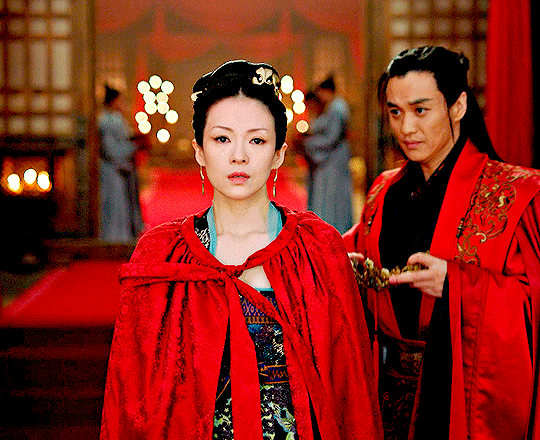
Let's dip our toe into historicals! Granted, I still have plenty of gaps in my historical cdrama watch list (there are just so many and they're so long, I am doing my best people!) but this remains my all time favorite to date. It's epic, it's shockingly well written and paced for its length, the characters are excellent and compelling all around, and it has one of my all time favorite male leads and drama couples (another from the ride or die list!). Don't let the episode number intimidate you, it will fly by much faster than you think.
The Untamed
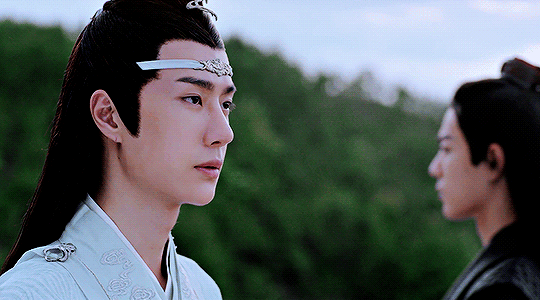
You watch bl so I am assuming you already know about Wei Wuxian and Lan Wangji, but just in case I will also include this drama as a much watch. It's likely the best live action danmei we will ever get.
Love Between Fairy and Devil
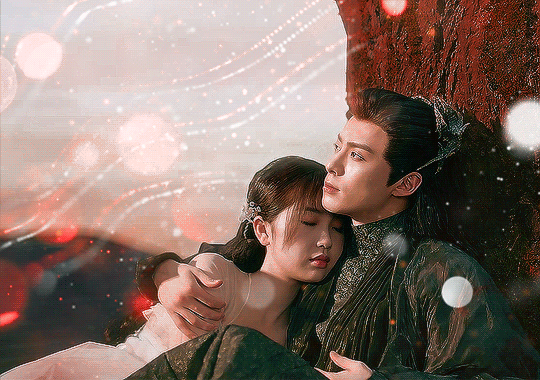
Have you ever wondered what it would be like if a show put all your favorite fanfic tropes in a blender, cast beautiful people to act them out, and put them in lavish costumes? Well, here is your answer.
Love and Redemption
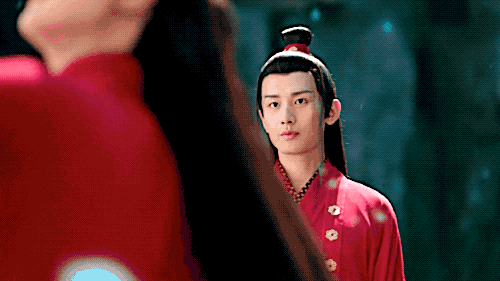
This one's for us angst with a happy ending girlies. An epic love story with lots of pining and struggle and strife, and it's so worth it.
Falling Into You
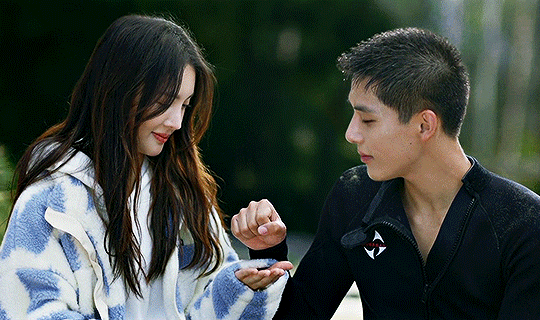
Back to the modern era, this is a classic sports drama with a noona romance. Very unassuming but full of charm and very well executed.
Fake It Till You Make It
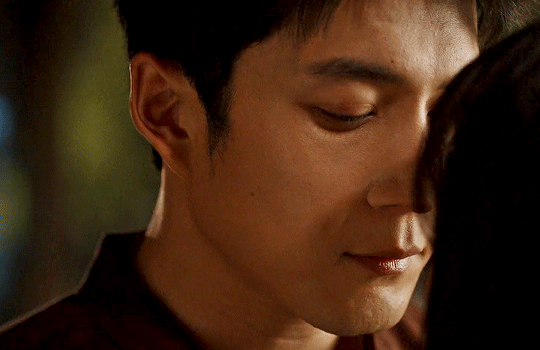
An unusually mature take on adult romance from a cdrama, this one is about two career focused permasingle love skeptics who meet, realize they actually like each other, and try to figure out what the hell to do with that. I love it a lot.
That should be enough to get you started! There are many many more recs to be had, so once you give some of these a try and figure out what you like, feel free to hit me up for more!
#tender light#go ahead#lighter and princess#reset#the rebel princess#the untamed#love between fairy and devil#love and redemption#falling into you#fake it till you make it#cdrama#shan recommends#shan answers
103 notes
·
View notes
Note
I have no idea if this is intentional, but with how you've written Kore/Persephone, I very much get like,,, DID, specifically a very wrathful protector alter vibes from Persephone?? And I dunno, I have DID myself and my own protector whose very much determined in his rage to keep us safe, and it's very sweet to be able to see us in a piece of work for once and not have it be demonised. So even if it was completely unintentional, thank you!

Aww anon! This was sweet to read, and I'm happy to inform you that you're not the only one with DID who's relating to Kore's story in the comic! We have another reader in the community who's very outspoken in the Discord server and always speaking on their experiences with DID and how it relates to their analysis of Kore. So you're not alone in feeling that!!
I will say that while I didn't explicitly set out to make Kore a DID-specific character, I can certainly see why and how people with DID are relating to her and I think it's wonderful. I've been writing characters like Kore for years now, as a fan of the "alter ego" trope in media (and it's a big reason why I felt so attached to LO in the first place through the initial S1 setup of the AOW and Persephone being her "wrathful" side) and I've definitely had my own mental health struggles over the years that I think have certainly contributed to that (I don't have DID as far as I know, but I do have those mental "splits" in times of high stress that's almost similar to mania, so I'd be more likely to believe it's either just autistic meltdowns or MAYBE borderline personality disorder lol) Writing characters like Kore has always brought me comfort through personifying the processing of emotions and perspectives and conflicting thought processes.
So I'm glad Kore has brought you that same comfort 🥰
The only thing I will caution is that the topic of Kore and Persephone will get dicey at times. Kore will go through many ups and downs in the plot that will simultaneously be presented through Persephone. There will be just as many lovely moments to be had as well as ugly. Proper trigger warnings will be provided when necessary but much of their plotline will address some rather emotionally devastating stuff, to say the least LOL At the end of the day though I want to give them both a satisfying ending, so I hope we can all weather the storm together until we get to the light on the other side 💖
Thank you so much for reading, I hope you continue to find joy and peace in their story 🥰
94 notes
·
View notes
Text
What They Think Of You (Season 1):
🎮Leviathan🎮
✦ To be honest, Levi pretty much forgot that the Human Exchange Student was going to be arriving that day. I mean, he had so many more important things to worry about, so what reason would he have to care about a simple human?
✦ …Actually… He could use this to his advantage. Would it be petty? Maybe, but it would serve Mammon right for being such a scummy brother!
✦ And surprisingly enough, his plan worked! But despite what his brothers were insinuating, he didn't care for you in any way! Not at all! Not one bit!
✦ It's not like he was practically living within one of his favourite anime tropes, having become the unsuspecting onlooker to a real life isekai! An innocent human suddenly thrust into a world of magic and demons! An instantly compelling setup that had made him fall in love with many a main characters…
✦ But regardless of any of that!!! He was just a stinky Otaku who gamed his days away in the comfort of his room. There was no need for him to get involved with whatever daredevil antics the human and his scummy brother were bound to get up to.
✦ …That wasn't going to be as easy as he wanted, however.
✦ Because this human just didn't know when to quit! I mean, why do they get to have so much fun binging TSL and then act so confident as if they know what they're talking about? It just wasn't fair.
✦ And now here he was, standing in front of a terrifyingly large crowd in the main hall of RAD, just to prove to one singular prideful human that he was the ultimate TSL fan!
✦ …He really didn't want to hurt them. He honestly felt downright awful after his outburst. But most of all, he felt defeated.
✦ Did he believe that you cheated during the TSL Showdown? …Kind of, yeah. Actually, yeah, he did think it was a scummy thing to do!
✦ But… it's not like he was in a position to have the rarest of merch or all the insider details of his favourite story. And that's simply because he was a shut-in. He keeps to himself and he never tries to interact with others.
✦ Whether he likes it or not, you got the advantages and opportunities you had because you actually interacted with people and made your own impression on them.
✦ And that made him so jealous.
✦ So he agreed to the pact. He conceded that you had something that he didn't, despite how desperately he did want it.
✦ And then you apologised to him. For using dirty tactics to get your way, because you would feel the exact way he did if someone tried to do that with your favourite pieces of media.
✦ …Wait, what???
✦ You actually enjoyed video games and anime too? Just like him??? ...I mean, maybe he could forgive you, but that didn't make you two best friends or anything!!!
✦ Spoiler Alert: It definitely did to him.
✦ He actually got to know you on a deeper level, watching how you'd interact with his brothers, like you were just always meant to fit with them. These… misfit fallen angels that they were.
✦ And the craziest thing of all was that you actually wanted to hang out with him!!! You wanted to share your favourite Human World anime and manga with him, and soon enough (way faster than he was ever willing to admit), he did the same for you with Devildom media.
✦ Which was all fine and dandy, sunshine and rainbows, but why in all of the three realms did his brothers have to be so obnoxious about you? Constantly vying for your attention, while you argued that you'd already scheduled this time for you and him.
✦ And wow, did hearing that pacify his envy quicker than any of the anime merch he's ever bought…
#obey me#obey me x reader#obey me x mc#obey me imagines#obey me imagine#obey me headcanons#obey me hcs#obey me shall we date#shall we date obey me#obey me leviathan#leviathan x reader#celestial writings
243 notes
·
View notes
Text
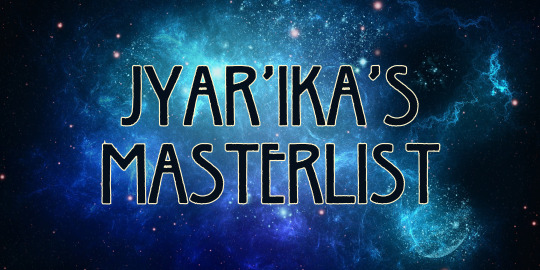
Hi, thanks for checking out my writing!
I write purely for Din Djarin (though I read and rec other Pedro Pascal characters and other Star Wars media). Whilst not all my stories include smut, they usually contain adult themes and language, so they’re suitable for over-18s only 🔞
My writing is extremely detailed and character-oriented, and I research and proofread/edit thoroughly. I never start publishing something until it’s fully written. As a result, producing content takes me a while, but I hope this ensures that my completed works are high-quality, immersive experiences for my readers.
My preferred format is OC/Reader, by which I mean I keep physical descriptions blank or vague to allow as many people as possible to relate to my protagonists, but I fully develop their backstories and personalities to ensure dynamic characters. I mostly write female protagonists, and I use a combination of second-person (reader’s POV) and third-person (Din’s POV) perspectives.
Please feel free to JOIN MY TAG LIST

**The emojis assigned to each fic below indicate moods rather than specific genres and are open to interpretation**
PUBLISHED WORKS:
🔷 Be-All And Endor [406,690 words]
My magnum opus; this is a novel-length slow burn set after season 2. Din has a bounty on Endor and gets more than he bargained for when Reader accidentally almost runs him down with her speeder in the forest. Over 1.7K kudos on AO3. [😍+🥰+🥵]
🔷 Never Look Down [13,160 words]
Two-part mini-series set on Nevarro after season 3, wherein Din falls for Grogu’s babysitter but resolves not to tell her… until a drunken misunderstanding results in some revelations. [😍+🫣 and a hint of 🥵]
🔷 Din Djarin: The Contractor [1,001 words]
A silly little imagine-turned-one-shot that evolved from pics of Din holding a toolbox and the memory of Joel telling Ellie he used to be a contractor. Reader needs a repairman, and guess who shows up… [😡->😈]
🔷 Wedding Day [178 words]
I noticed Din’s very formal stance in a turbolift in s3e6, photoshopped him in front of a wedding arch, laughed at the obvious pun, and then wrote some questionable free-form poetry to post it with. [Pure 🥰]
🔷 The Long Goodbye [45 words]
Flash fiction in 280 characters or less. An examination of why Ahsoka came looking for Din in ‘Chapter 13: The Jedi’ rather than waiting for him in Calodan like he asked. [🥺]
CURRENTLY BEING WRITTEN:
🔷 Hush [✨due for release Jan ’25✨]
[snippet 1] [snippet 2] [snippet 3] [snippet 4] I was assigned the genre ‘secret relationship’ in a roll-a-trope writing challenge, so this fic follows Din and Reader embarking on a clandestine liaison that they have to hide from Karga… because Reader is our favourite High Magistrate’s niece. Multi-chapter; features sneaking around, flimsy excuses, near misses, and furtive smut. [😏🤫🥵]
🔷 Held Is The Seed
[details & snippet] [snippet] A four-part smutty series. When a guy in a cantina claims Mandos make poor lovers, Reader leaps to Din’s defence and lists several ways in which he could, in fact, be exceptionally talented in bed. Din overhears and later offers to prove her assumptions true one by one. [😍->🥵]
🔷 To See A Thousand Things
[details & snippet] [snippet - 1st one down] An extremely smutty, angsty piece based on five firsts and one last. Din has something casual going with a gun shop owner over the years, but they both discover that anything long-term will inevitably transform into something that runs deep. [🥵+😭]
🔷 Aruetiise
[snippet - 2nd one down] One-shot based on the idea of Din and Reader both coming up with reasons they can’t be together, none of which are the same and all of which are idiotic. An argument finally leads to a conversation about it. [🥺…🥹🥰]
🔷 Final Sanctuary
[snippet - 3rd one down] [snippet] Smutty one-shot (will be lengthy) based on a fantasy Din has when his shipmate spills white dip on her chin, and how he manages to figure out flirting and make his fantasy a reality. [🥵->🥰]
🔷 Din Djarin In Jarringly Domestic Situations
[details & snippet] [more details] Space romcom involving a series of encounters in which Din meets the woman of his dreams, but each time, it’s in an embarrassing or awkward situation. [😍😳🥴]
FIC REQUESTS:
Requests are open, mainly because having a deadline and someone waiting on me often helps motivate me to finish! I’m a slow writer, though, so whilst I’m happy to receive anon asks with requests, I also welcome DMs which will allow me to have a more open dialogue with you about when and how I can accommodate your ideas. I promise I don’t bite, and I love getting messages. 💙🩵
I’m flexible in terms of content, but please bear in mind that smut takes me a lot longer to write, and I lean towards fluff rather than angst (though I’m not opposed to the darker end of the scale). I’m also not a fan of breeding kink (sorry, I firmly believe Din is a reluctant father who loves Grogu but would have to be brought around to the idea of one day having his own) or age gap/daddy kink (I’m only 8 years younger than Pedro 🫣). Otherwise, please feel free to suggest anything that takes your fancy!
Ideally, short prompts or ideas for one-shots are best because I’m the girl who got over 400k words out of “slow burn set on Endor”, so the more complex your request, the bigger the undertaking, the longer it’ll take me to research and write (and the longer you’ll be waiting).
HOW TO SUPPORT ME:
If you’ve enjoyed my writing, please consider heading over to AO3 and adding some kudos to my fics there. Also, please consider reblogging any of my fics/series masterlists here on Tumblr. Both these actions increase visibility and help new readers to find my work long after publication. I don’t have a Ko-fi because I value online encouragement and marketing assistance more than cold, hard cash.
I also see spinoff media as the highest form of flattery, so if you feel like doing anything creative based around the universes I write, rest assured I’ll be here cheering you on and crying over how much I love you! It’s my dream for my writing to inspire others, whether it’s playing in my sandbox with me or crafting something of your own.
Thanks for your support; it means the galaxy to me! 💙🩵

🌀 I do NOT consent for my stories to be copied/reposted on any other site, nor stolen, scraped or reworked by AI 🌀
#masterlist#jyar’ika#din djarin#the mandalorian#star wars#mando#din djarin fanfiction#the mandalorian fanfiction#star wars fanfiction#mando fanfiction#din djarin x reader#the mandalorian x reader#mando x reader#din djarin smut#the mandalorian smut#mando smut#pedro pascal characters#pedro pascal characters fanfiction
72 notes
·
View notes